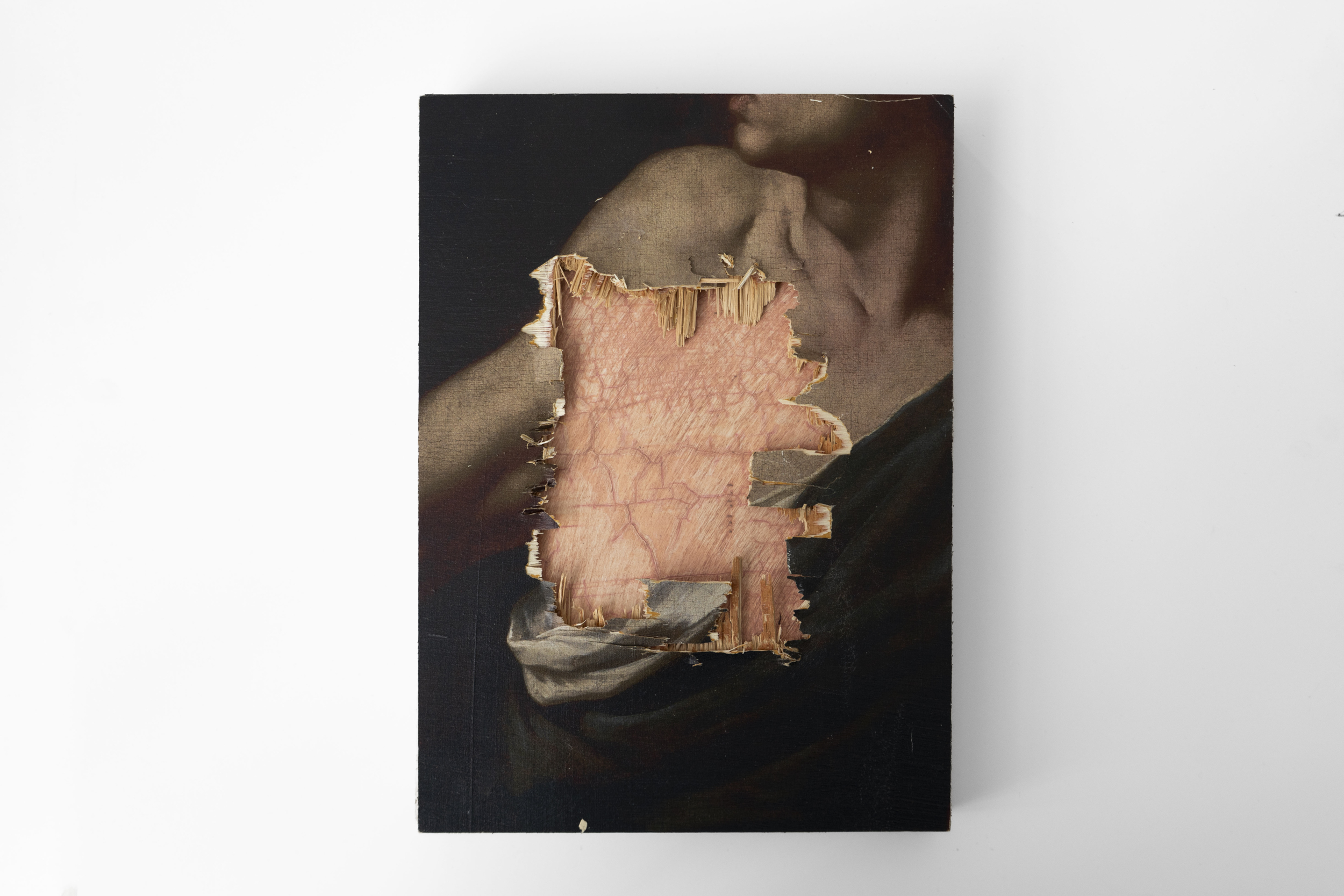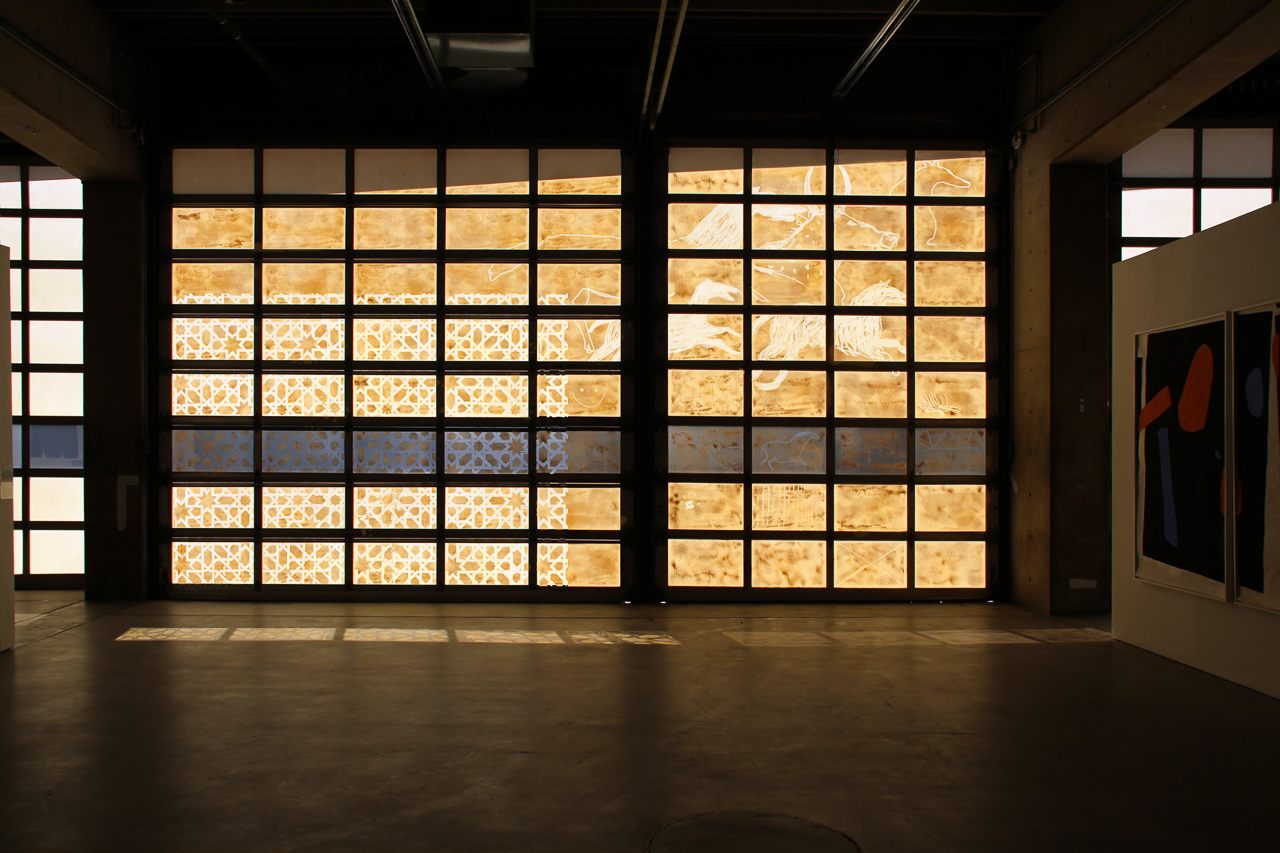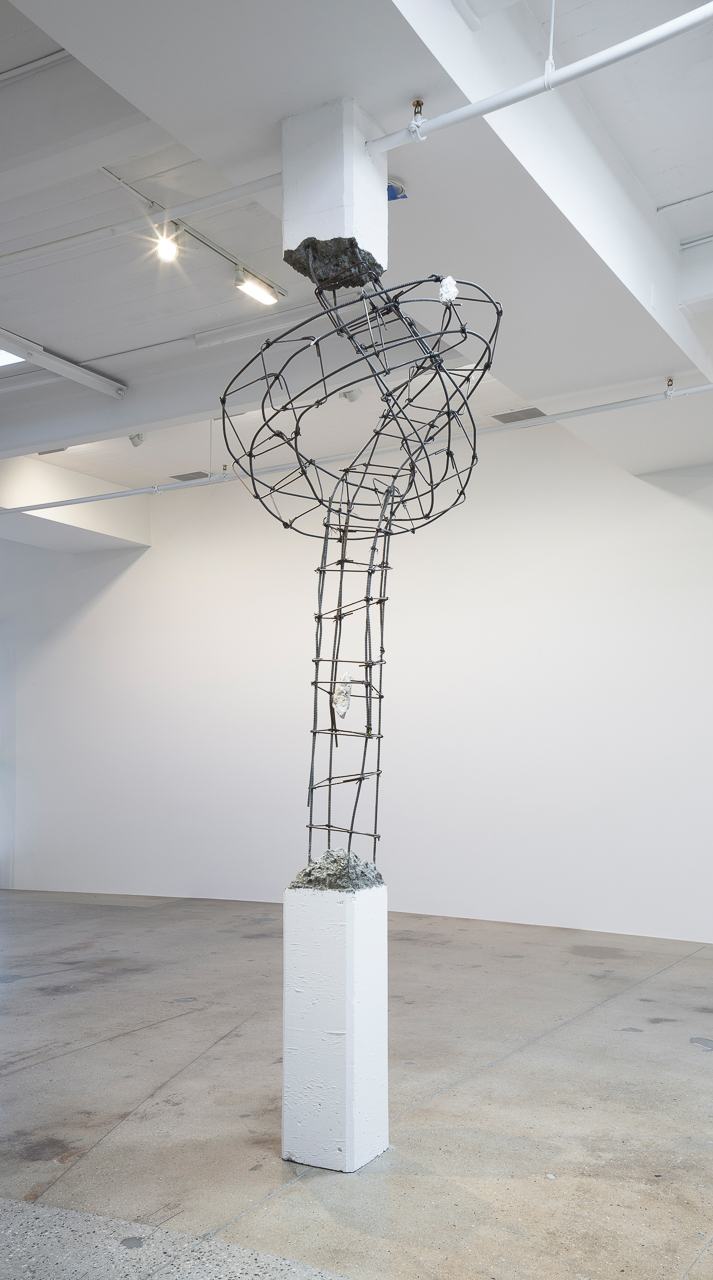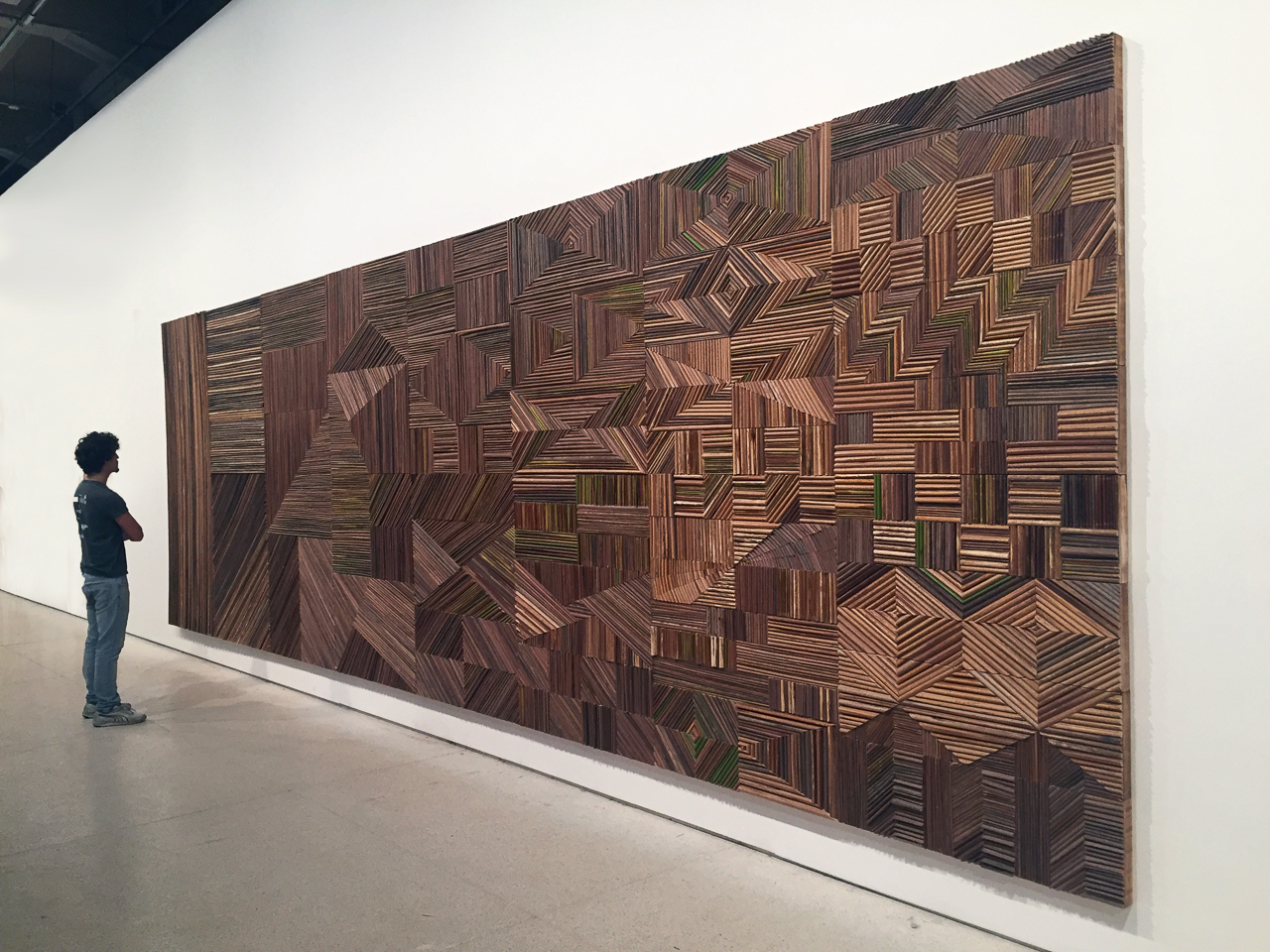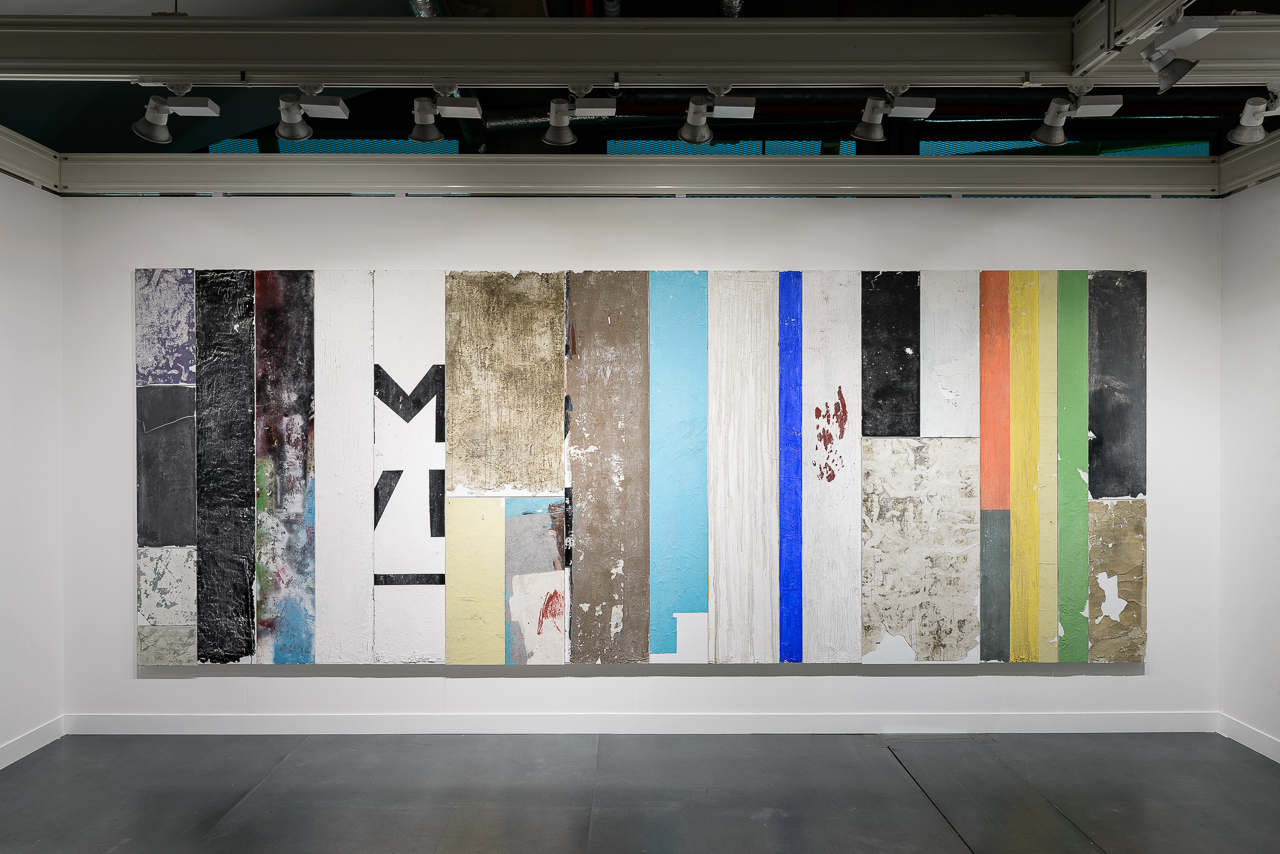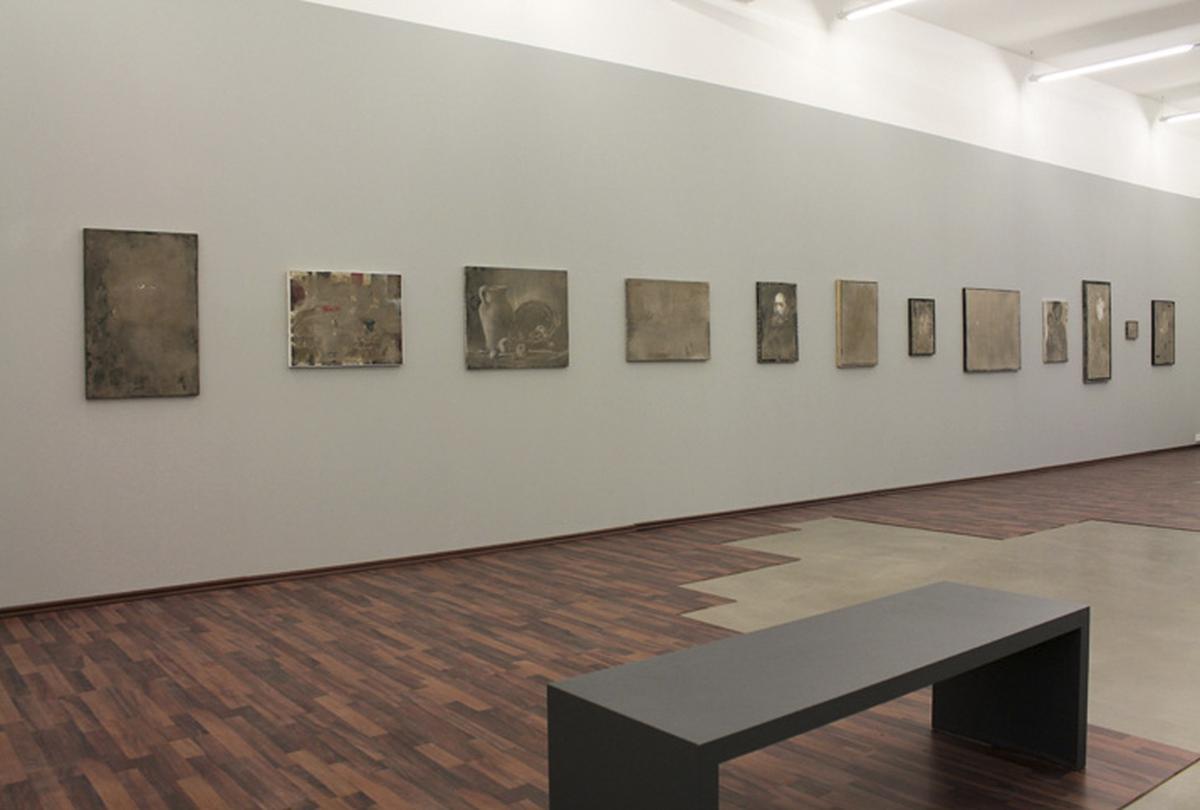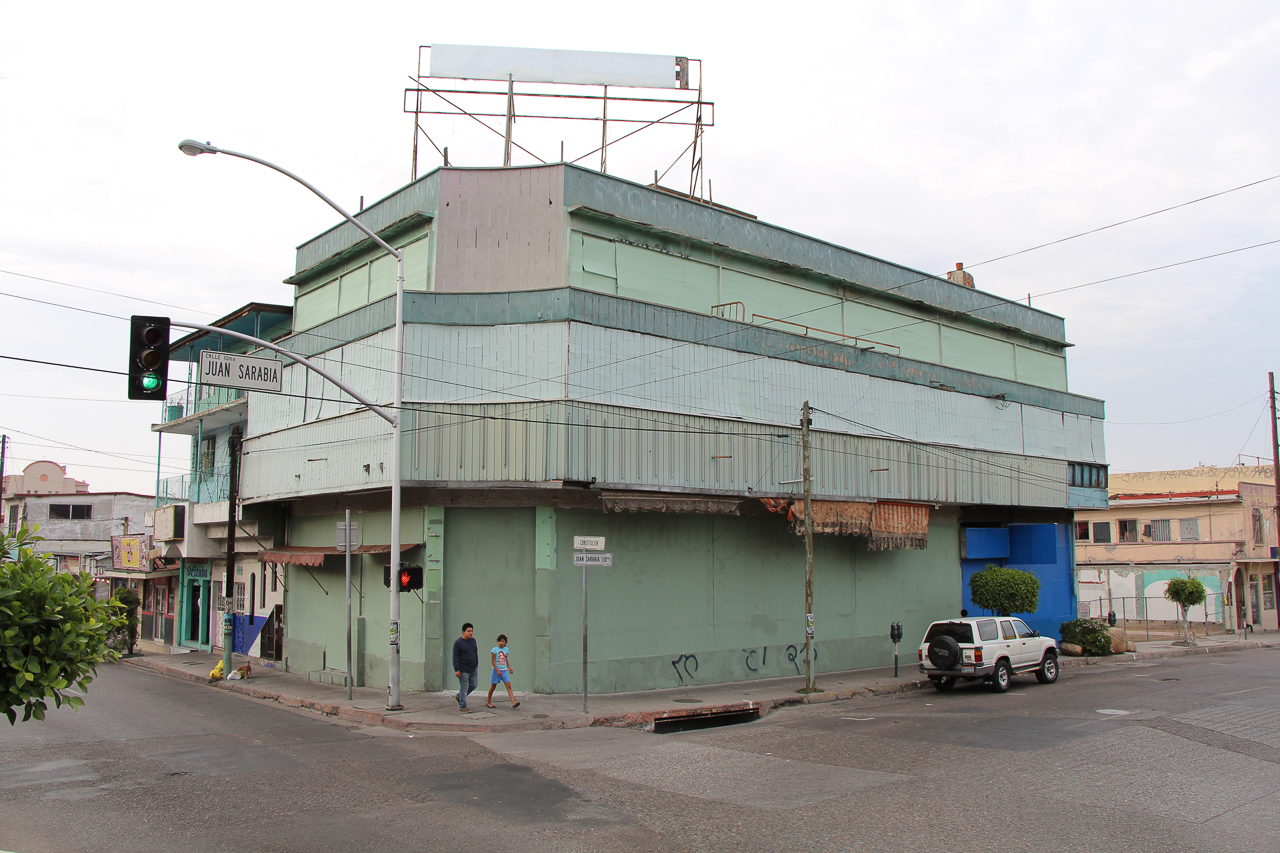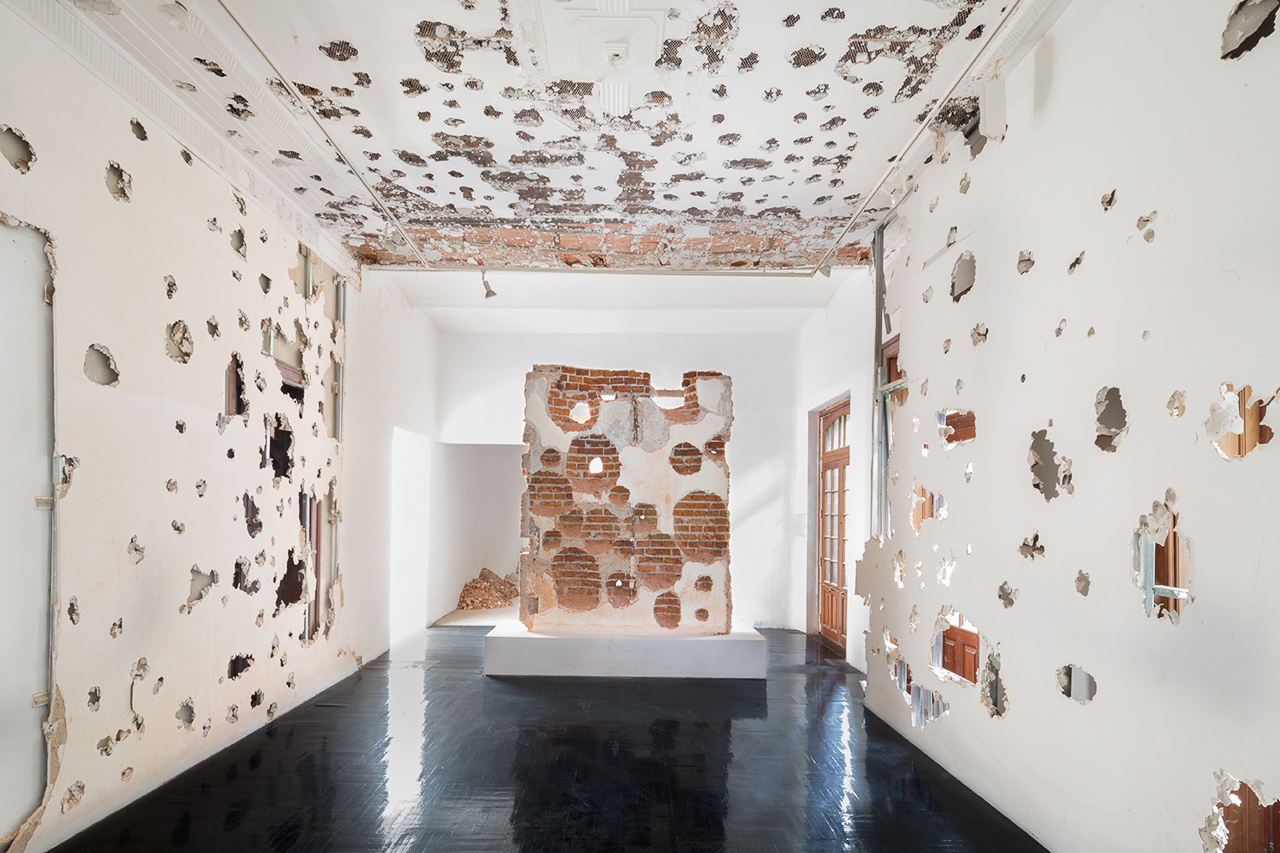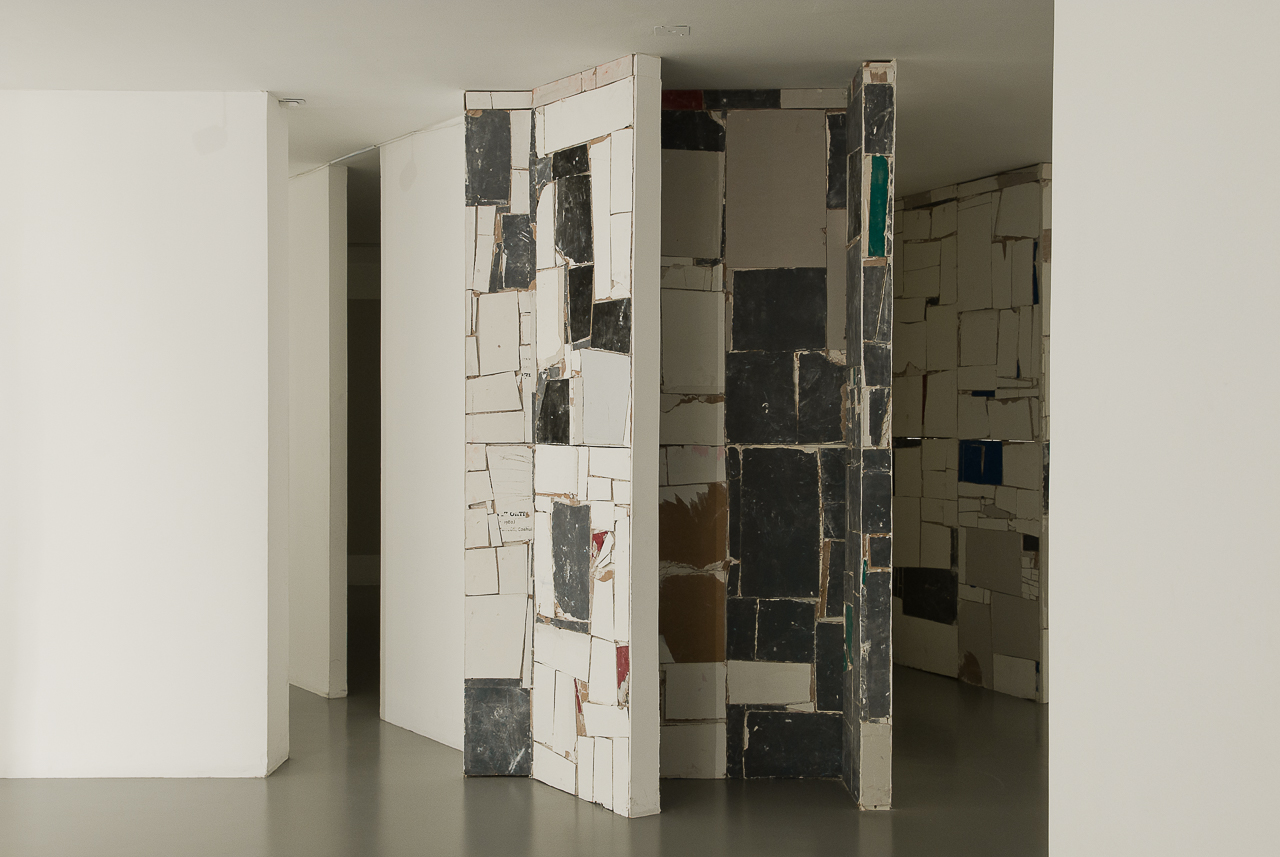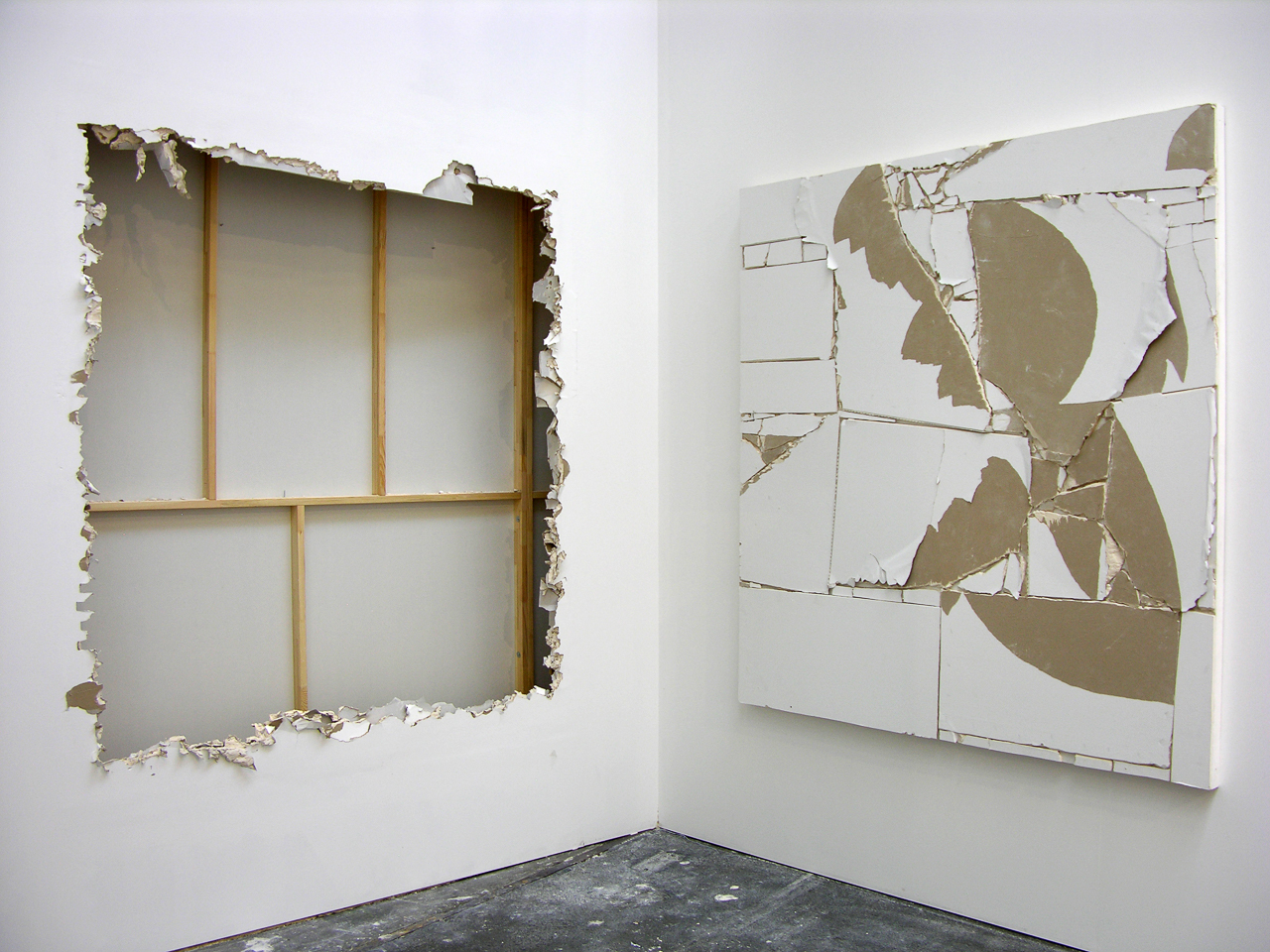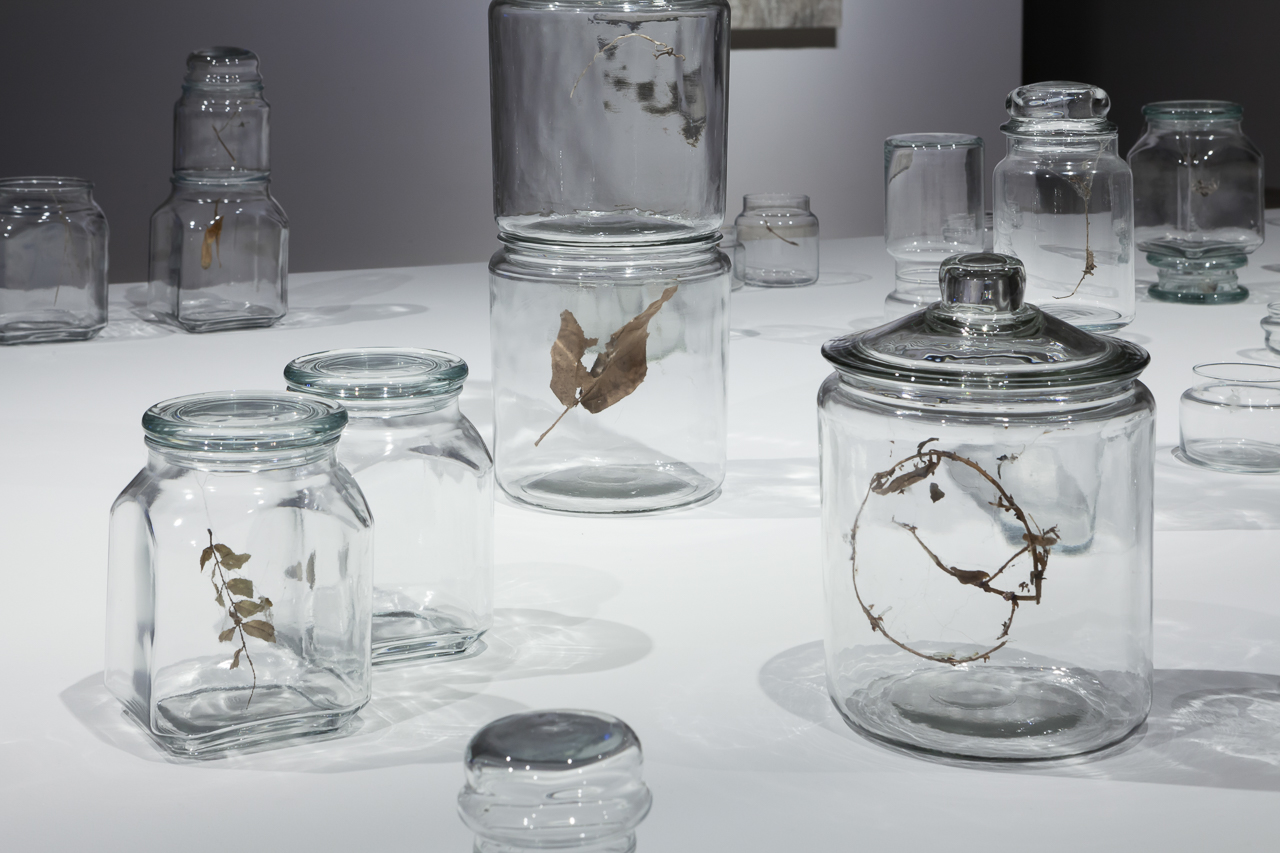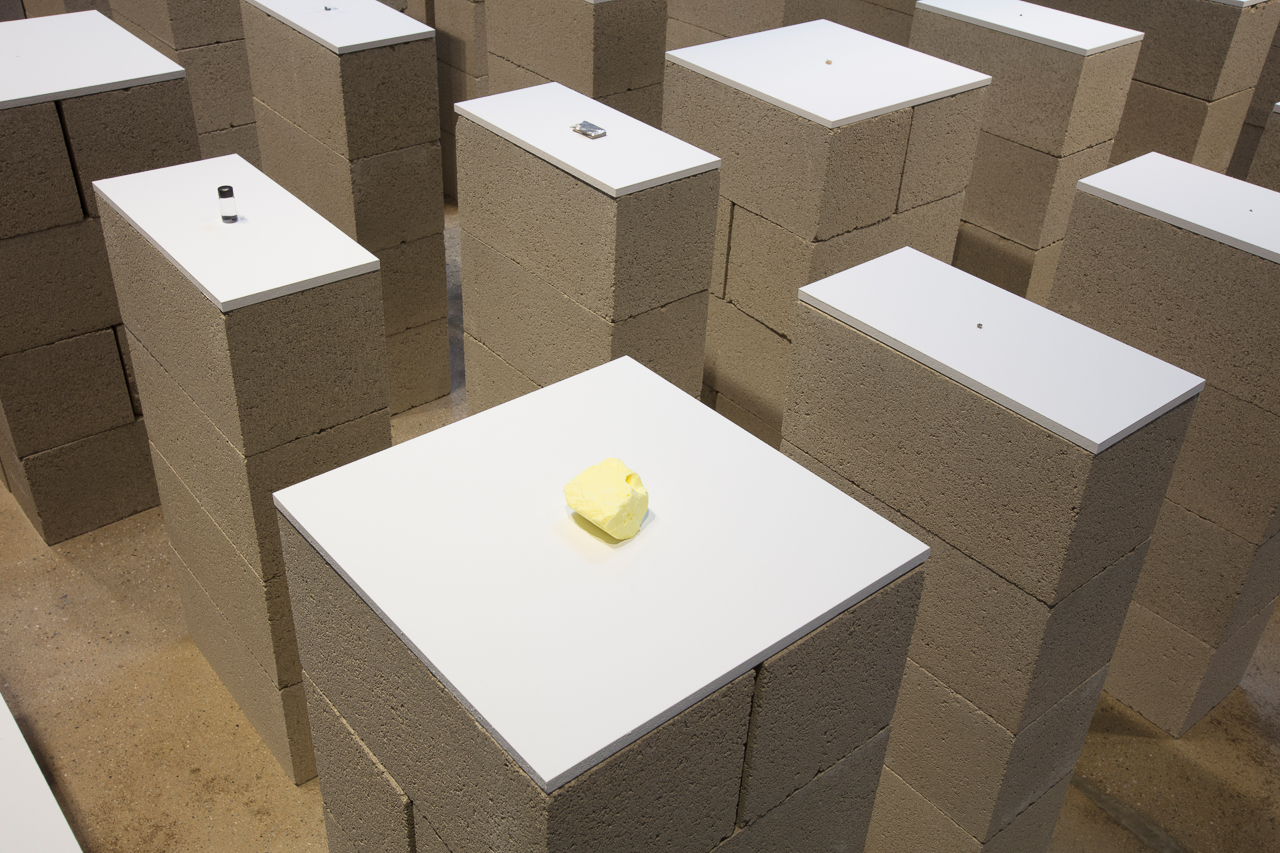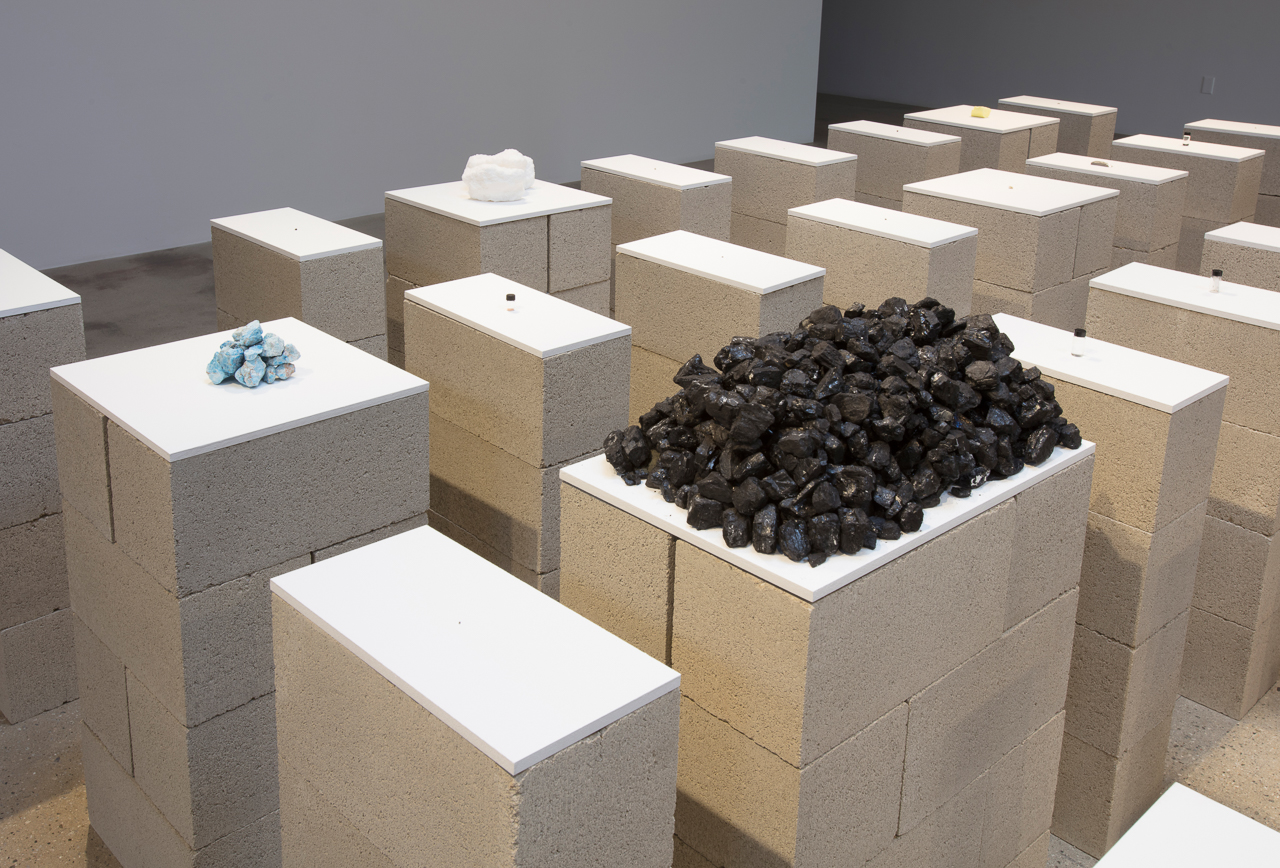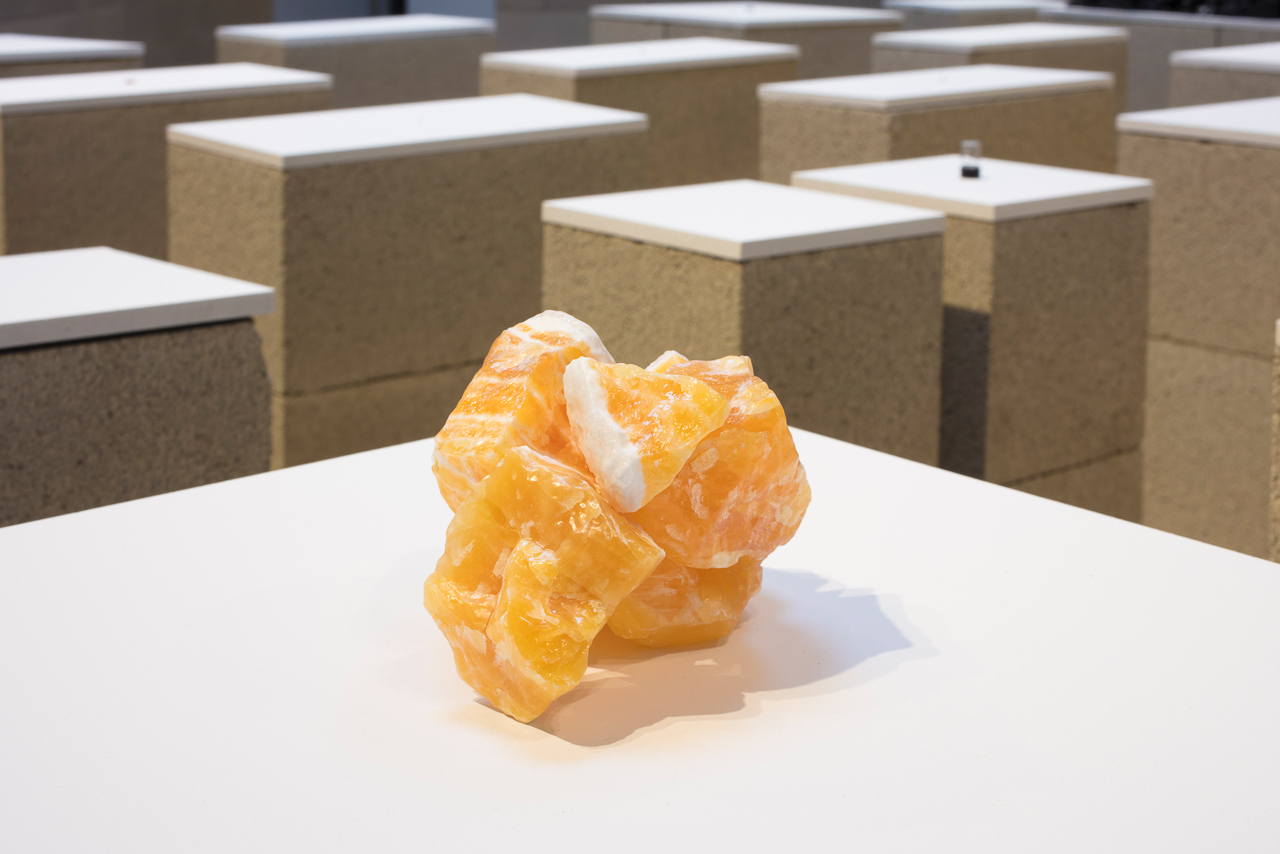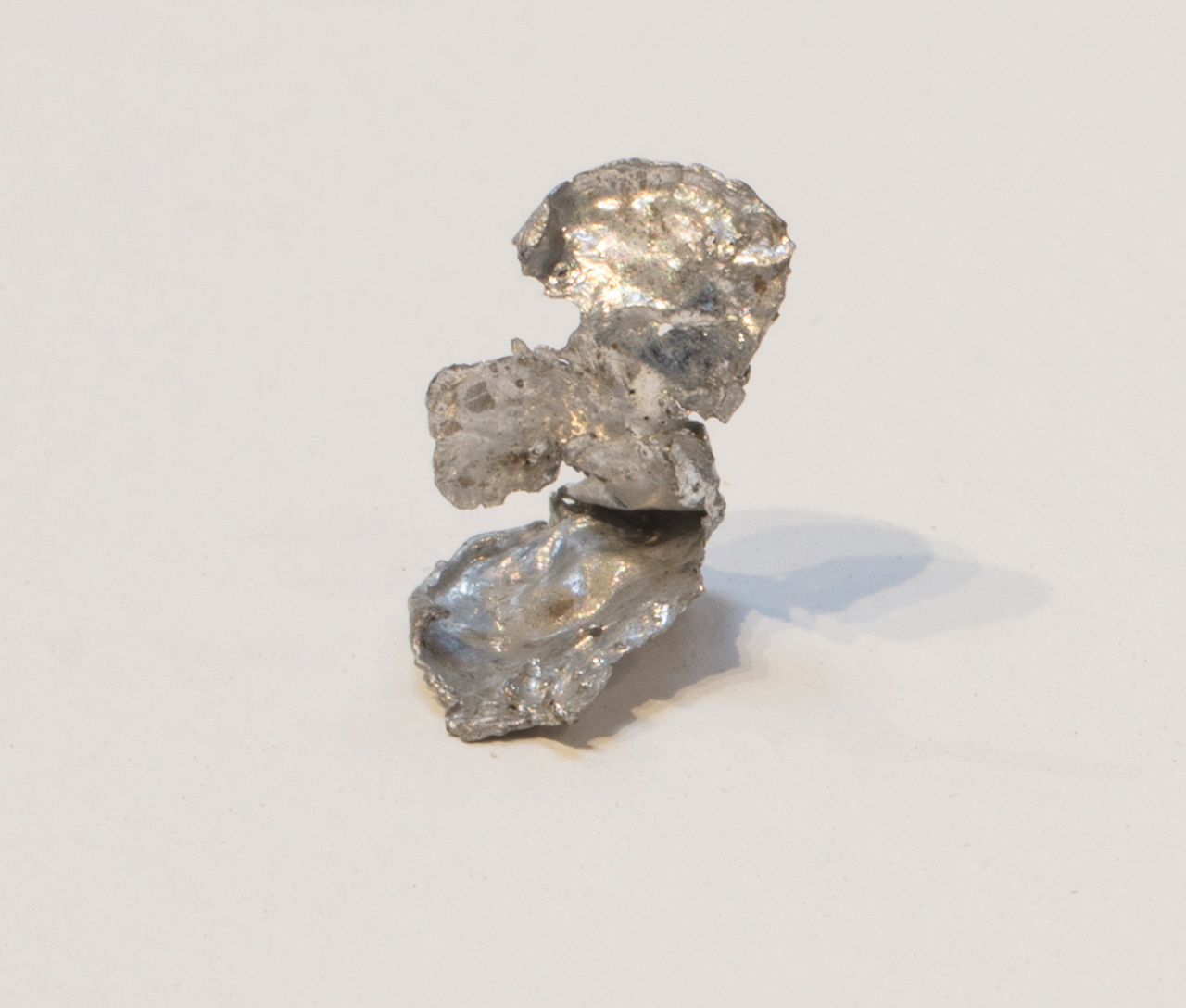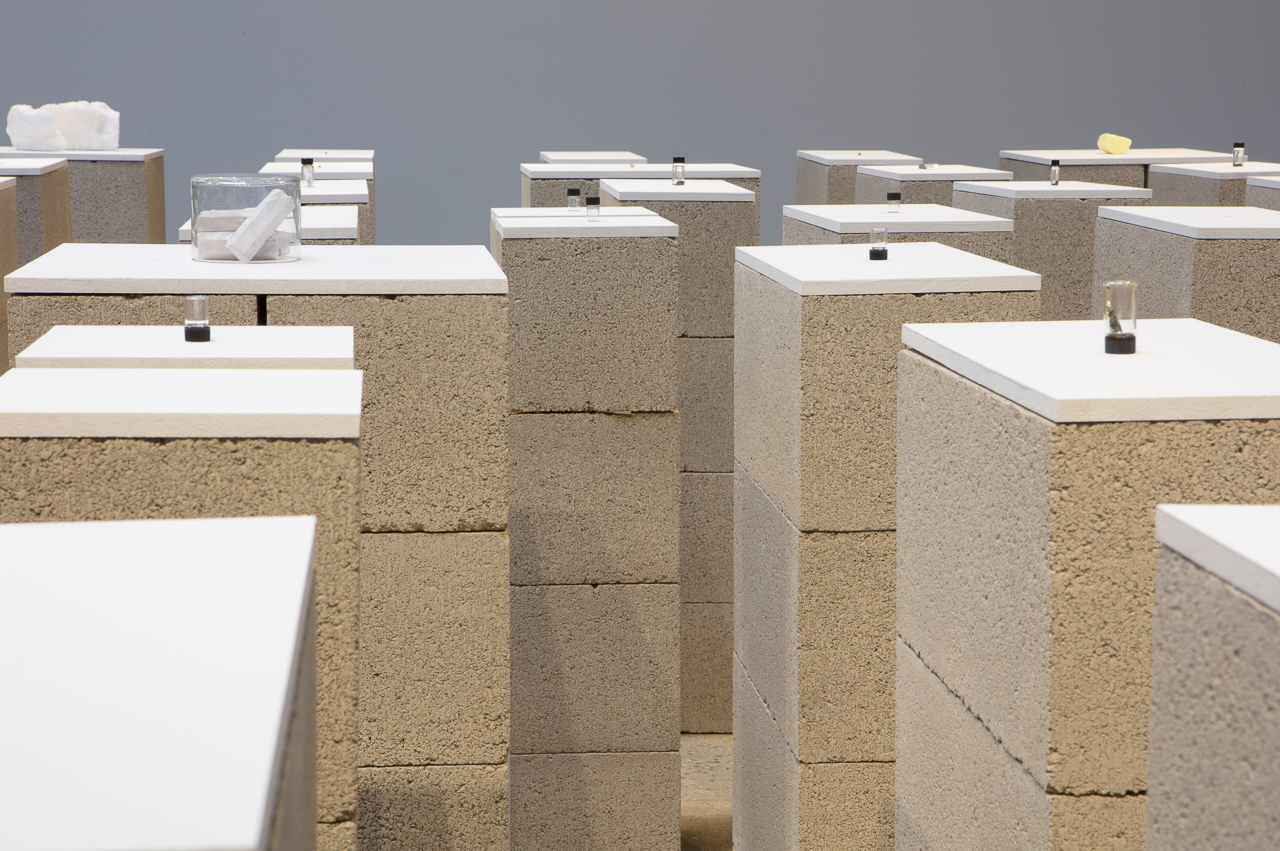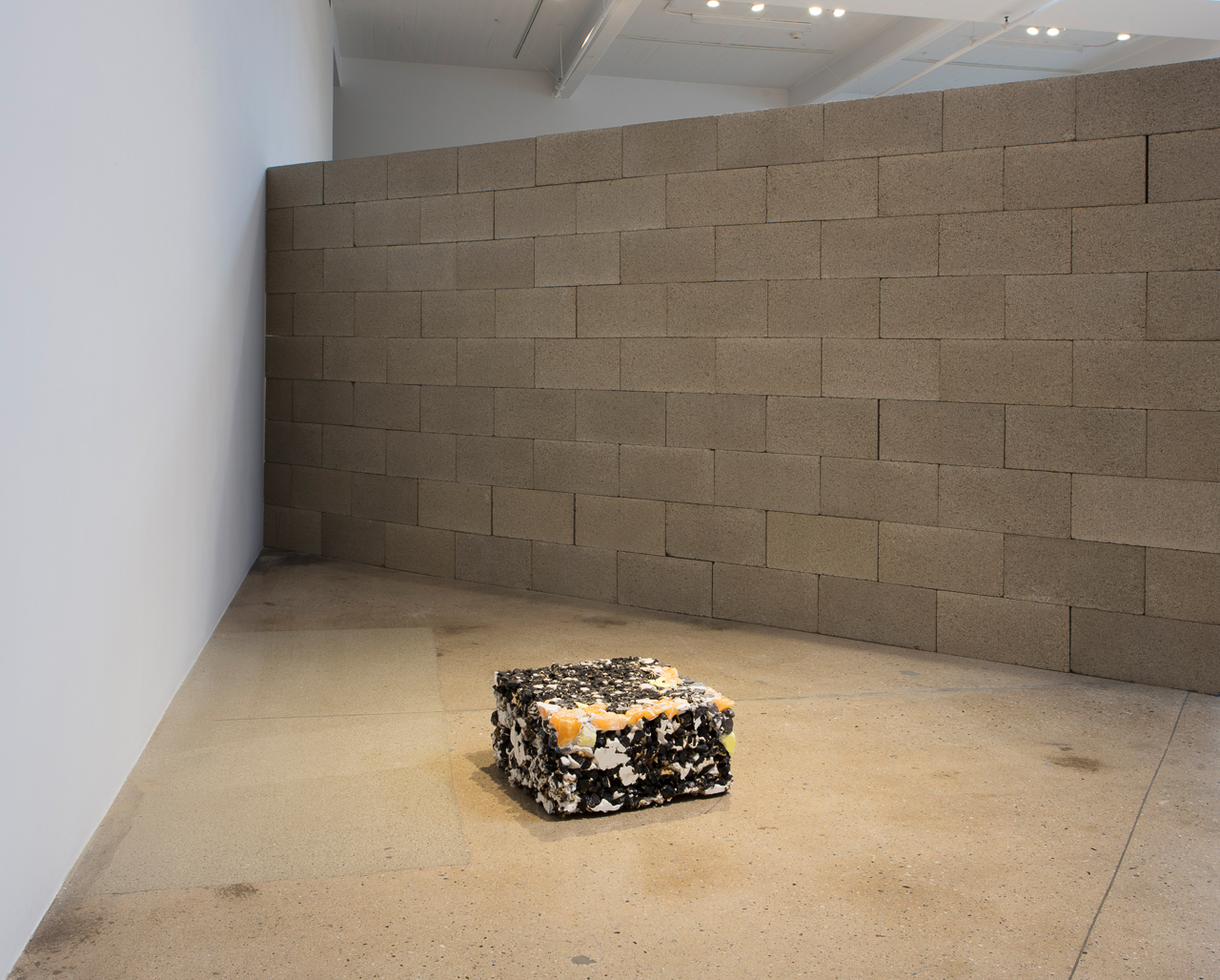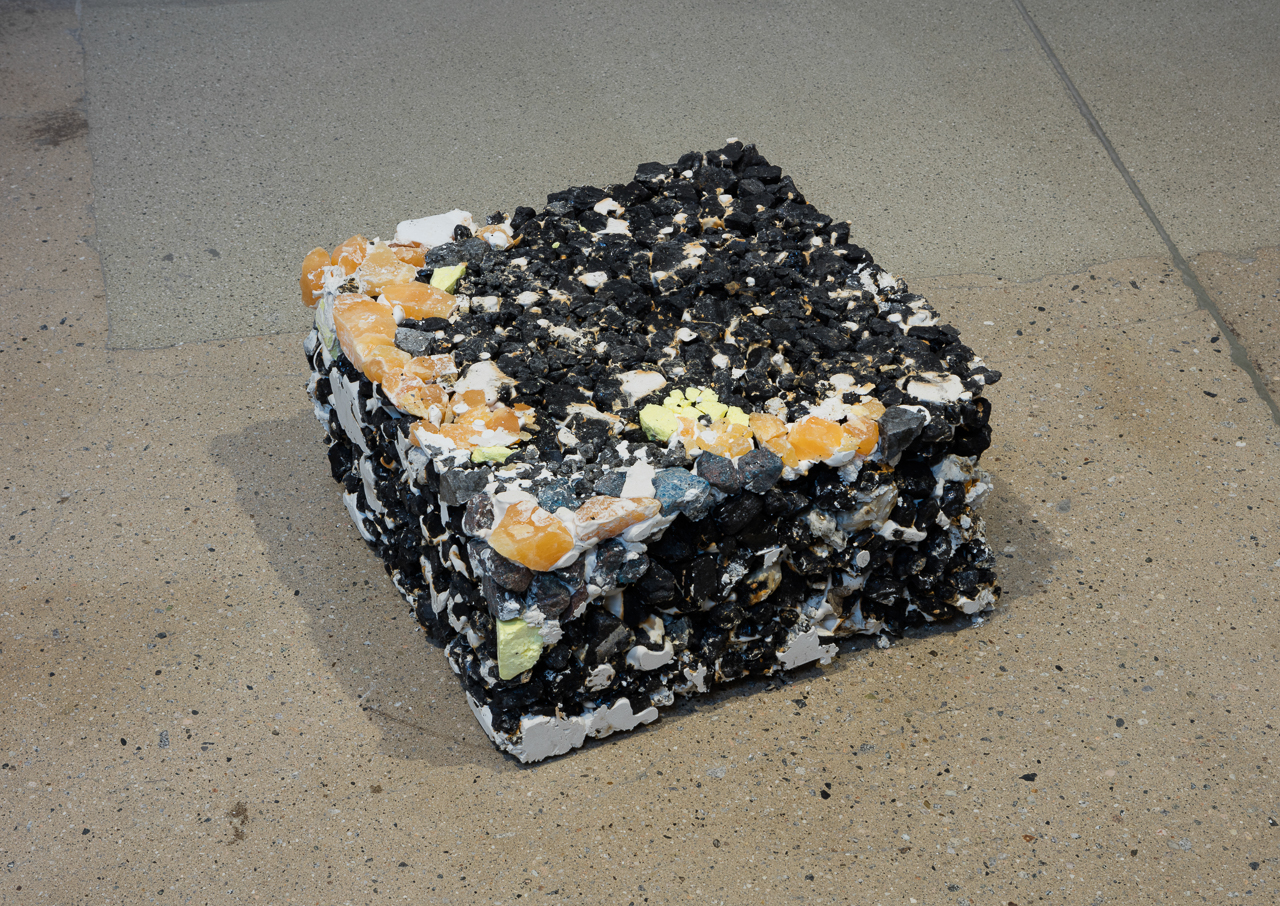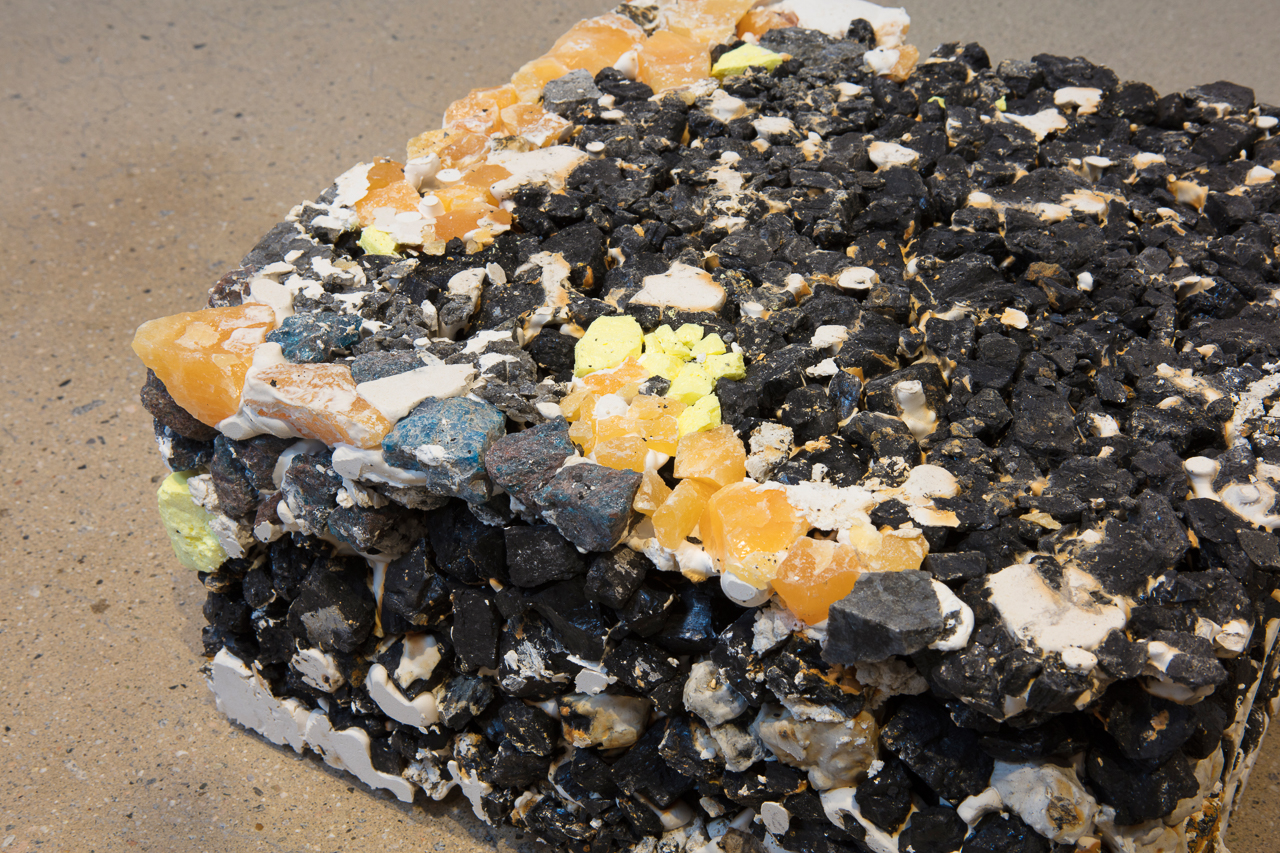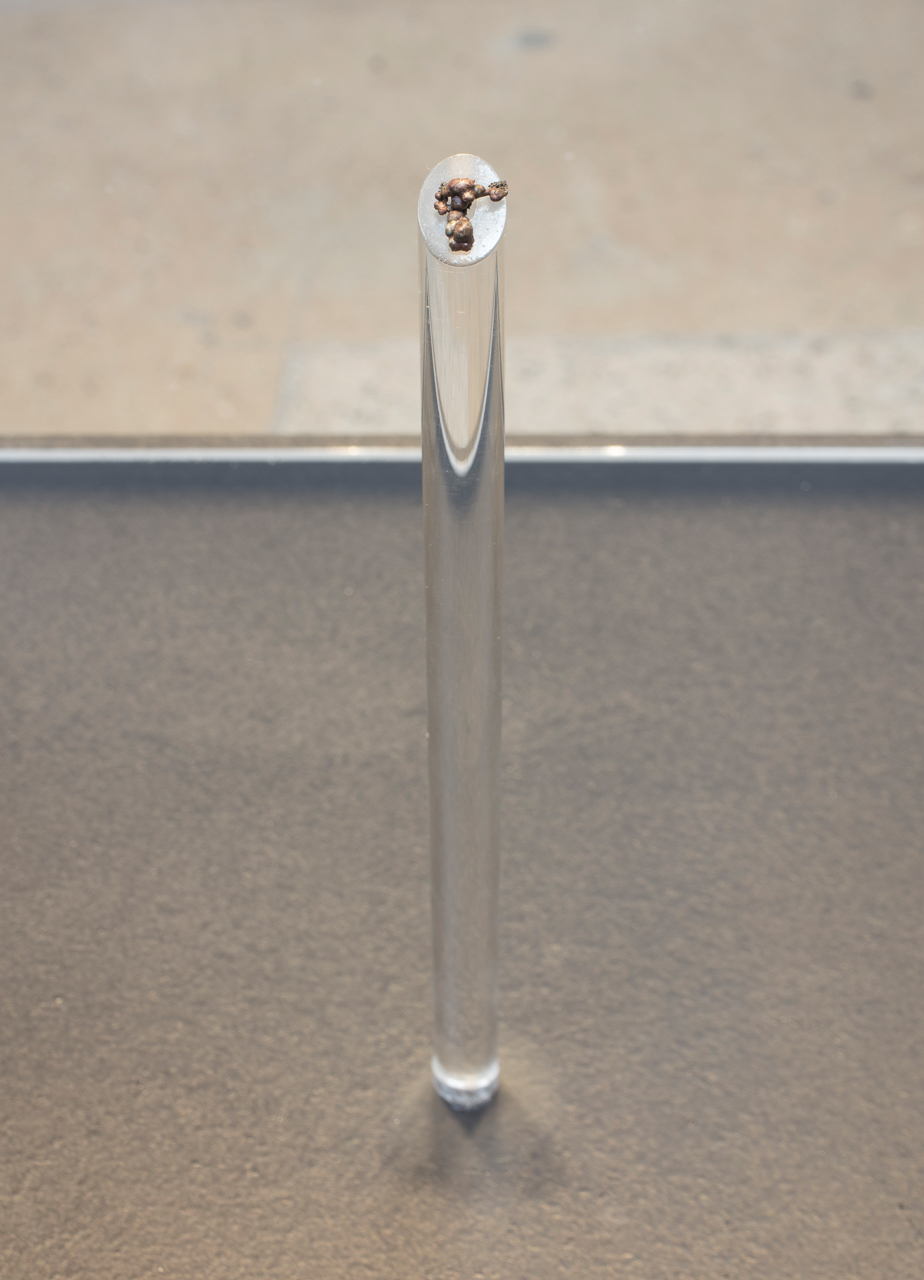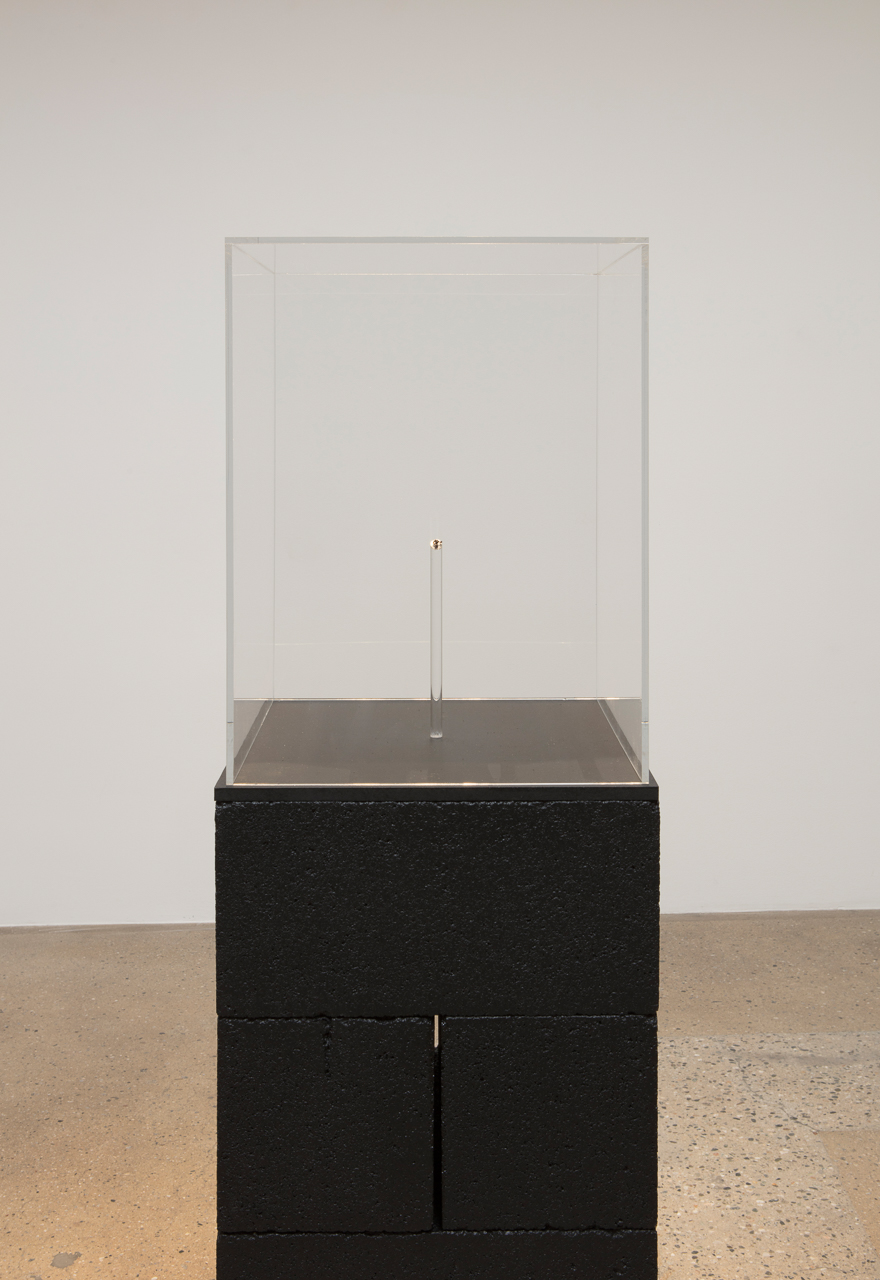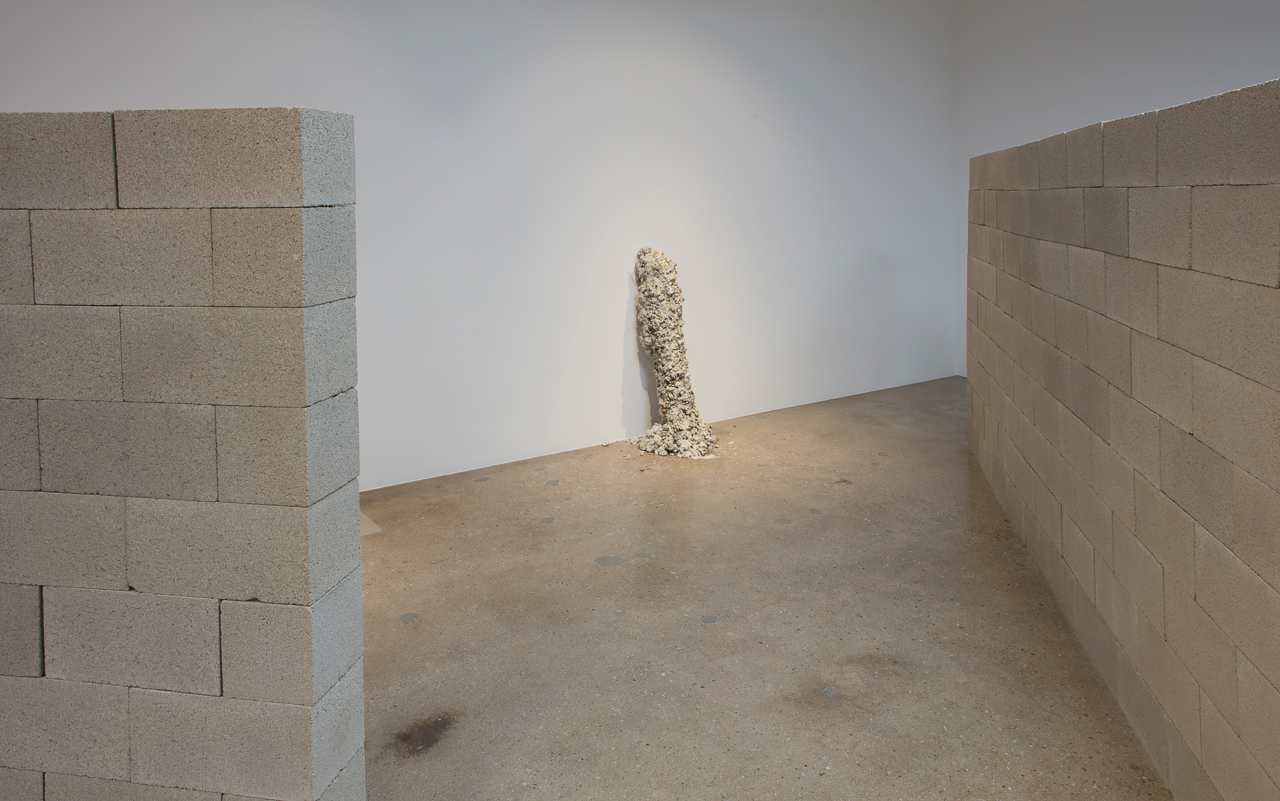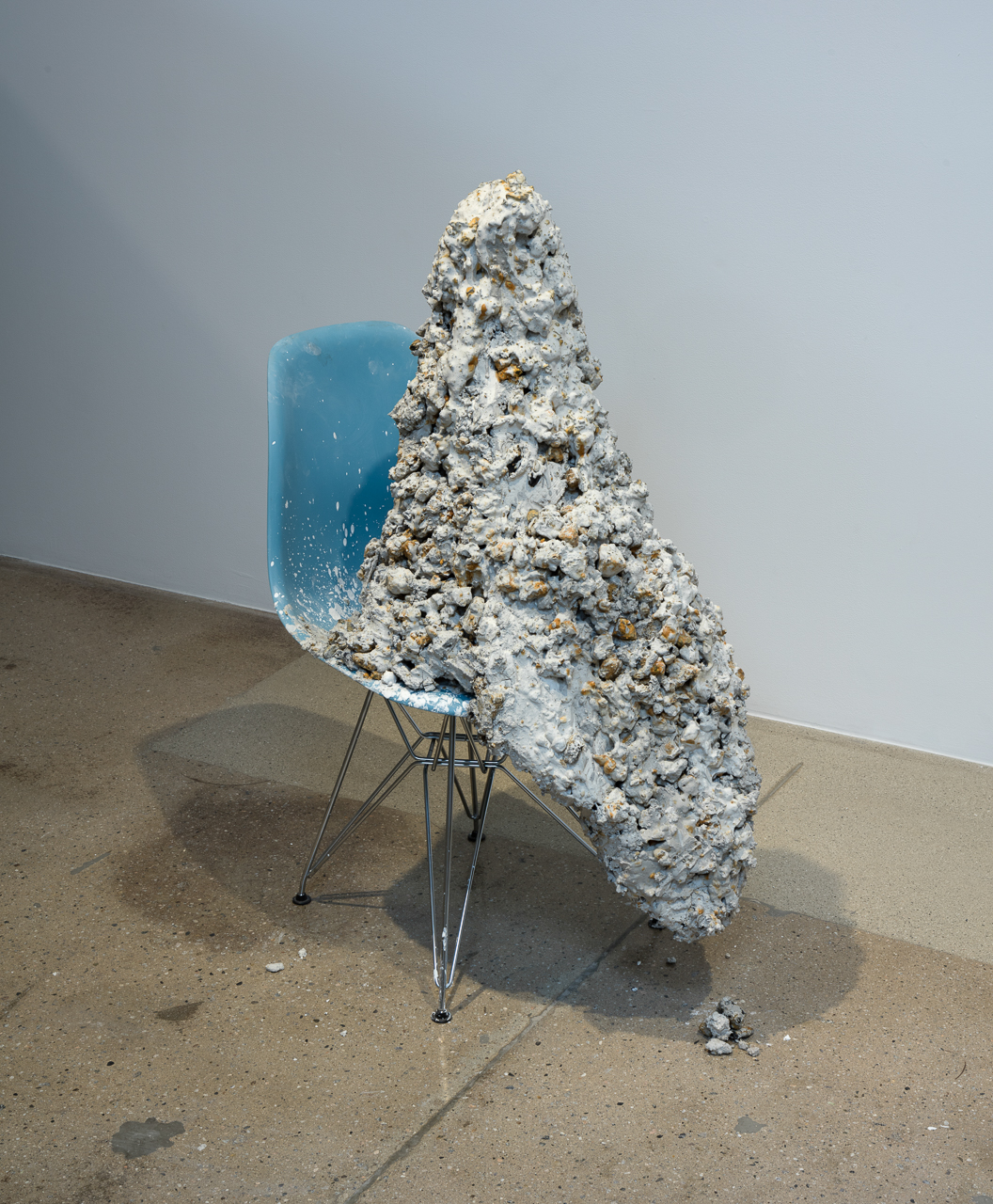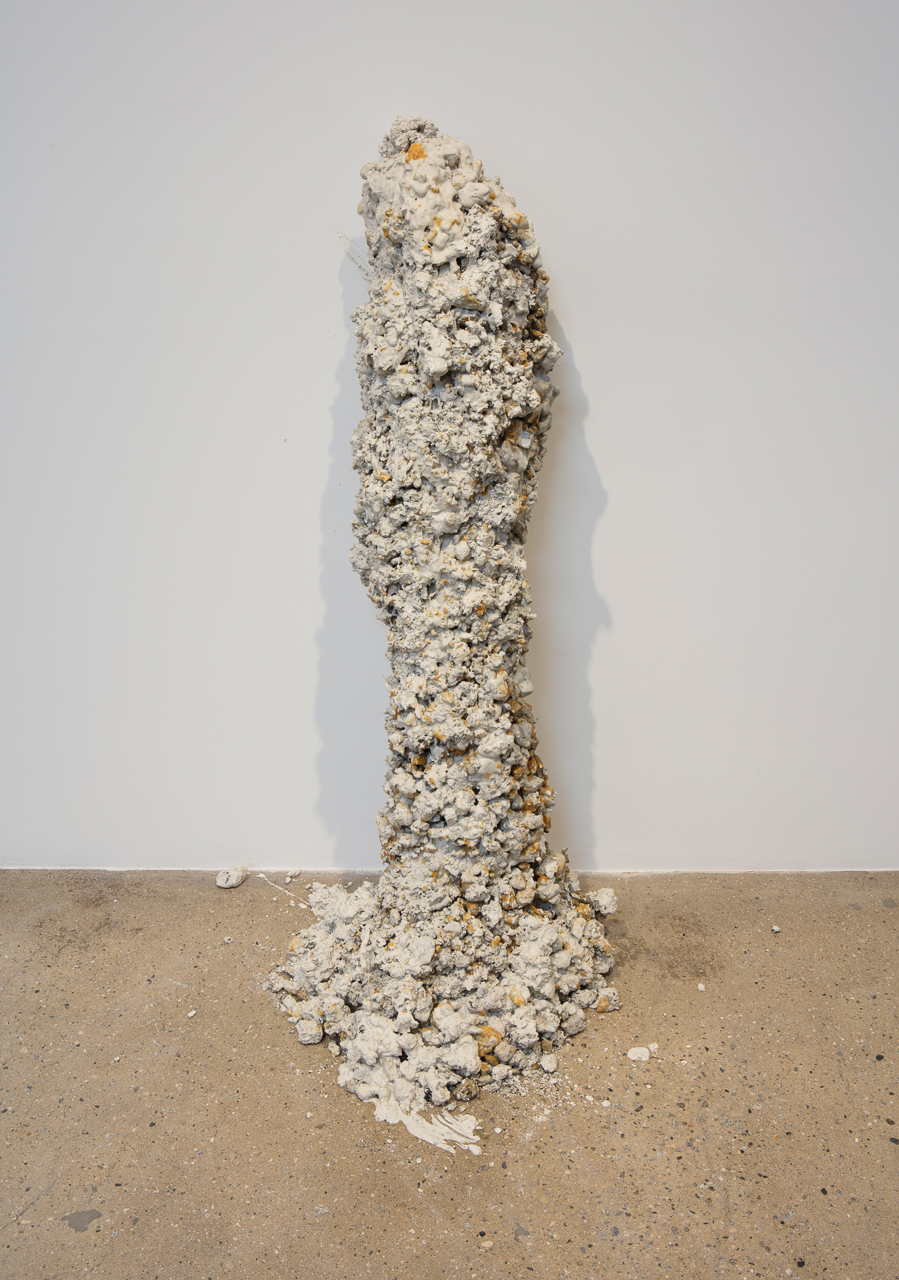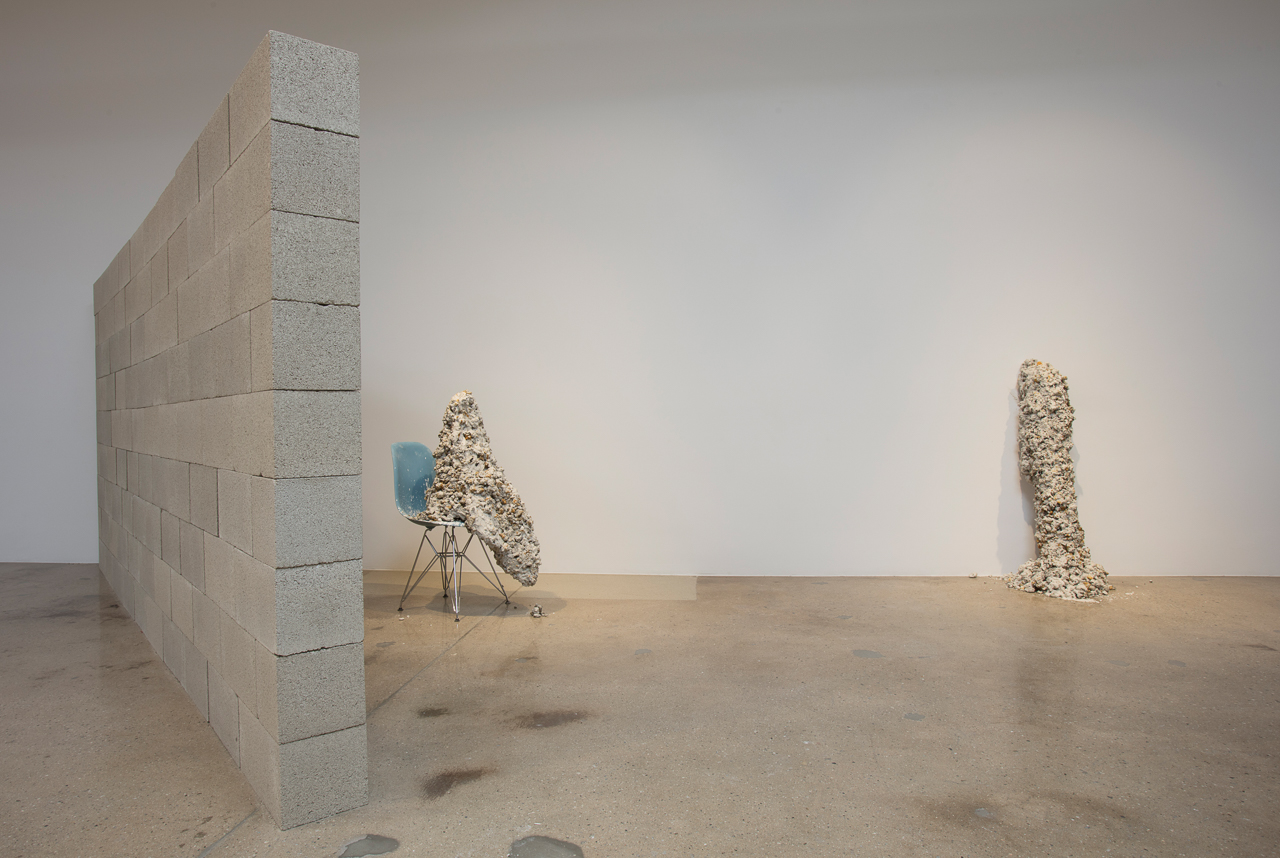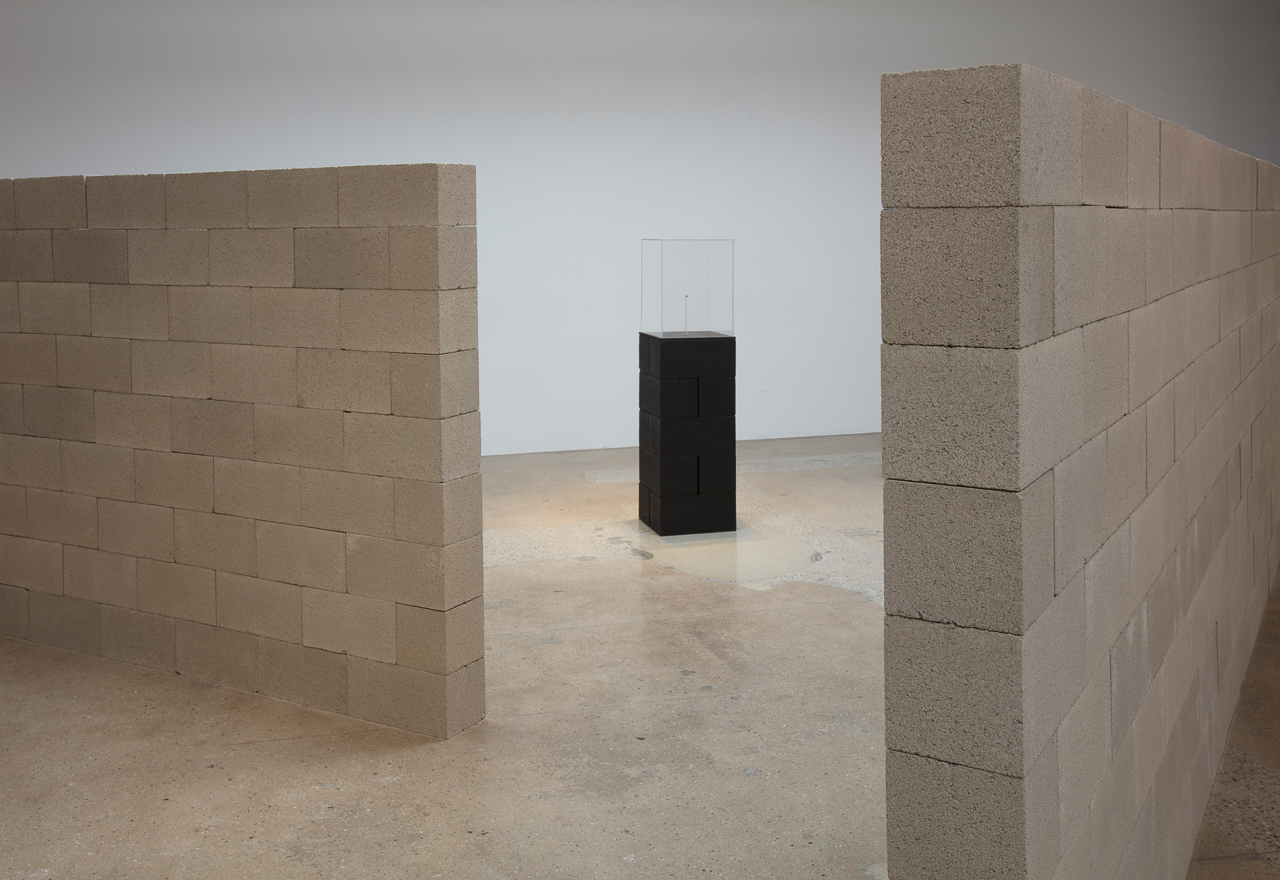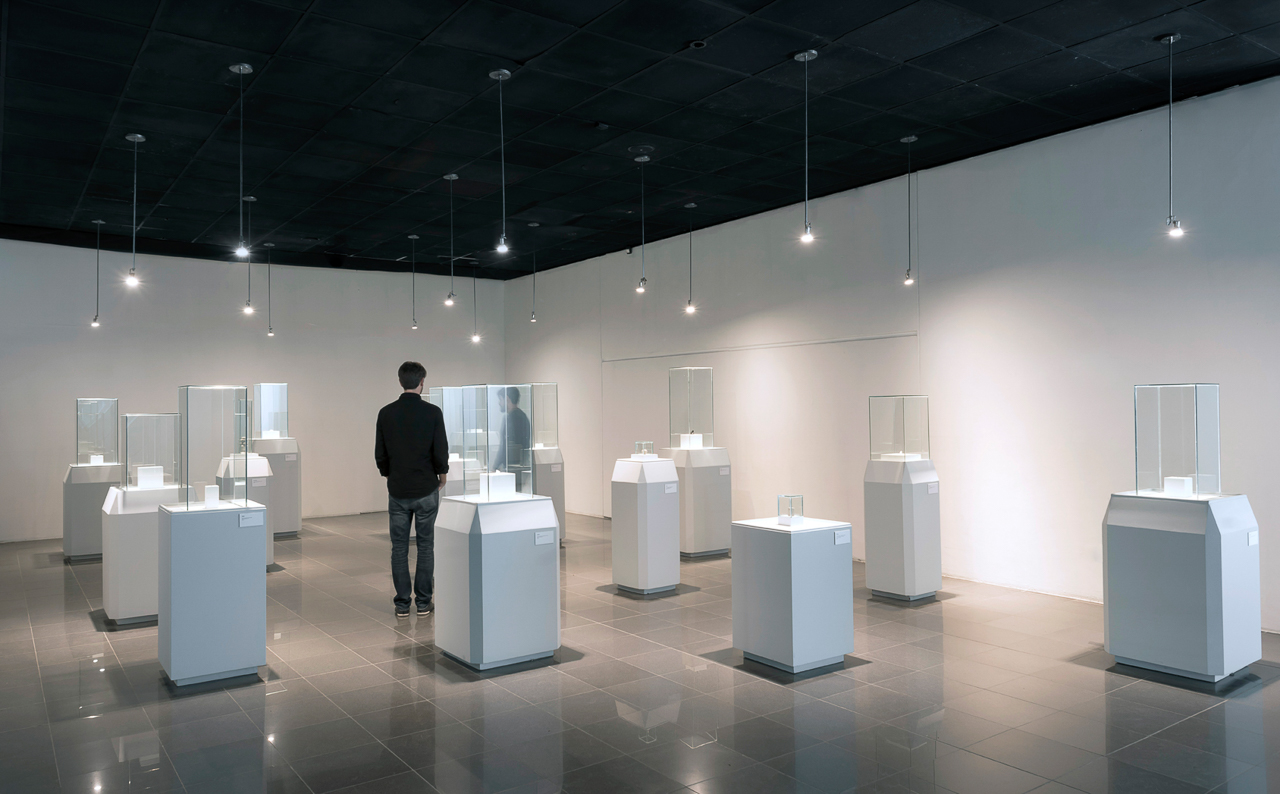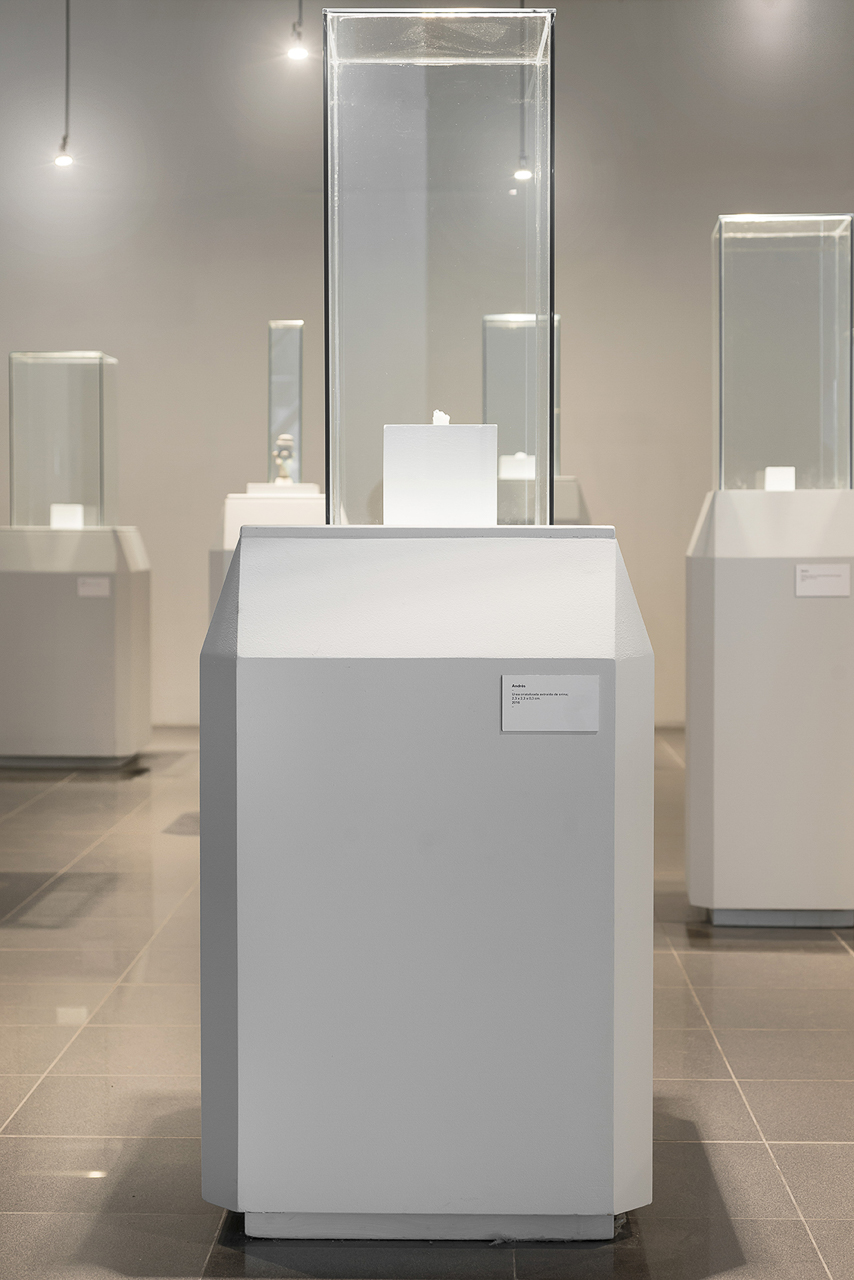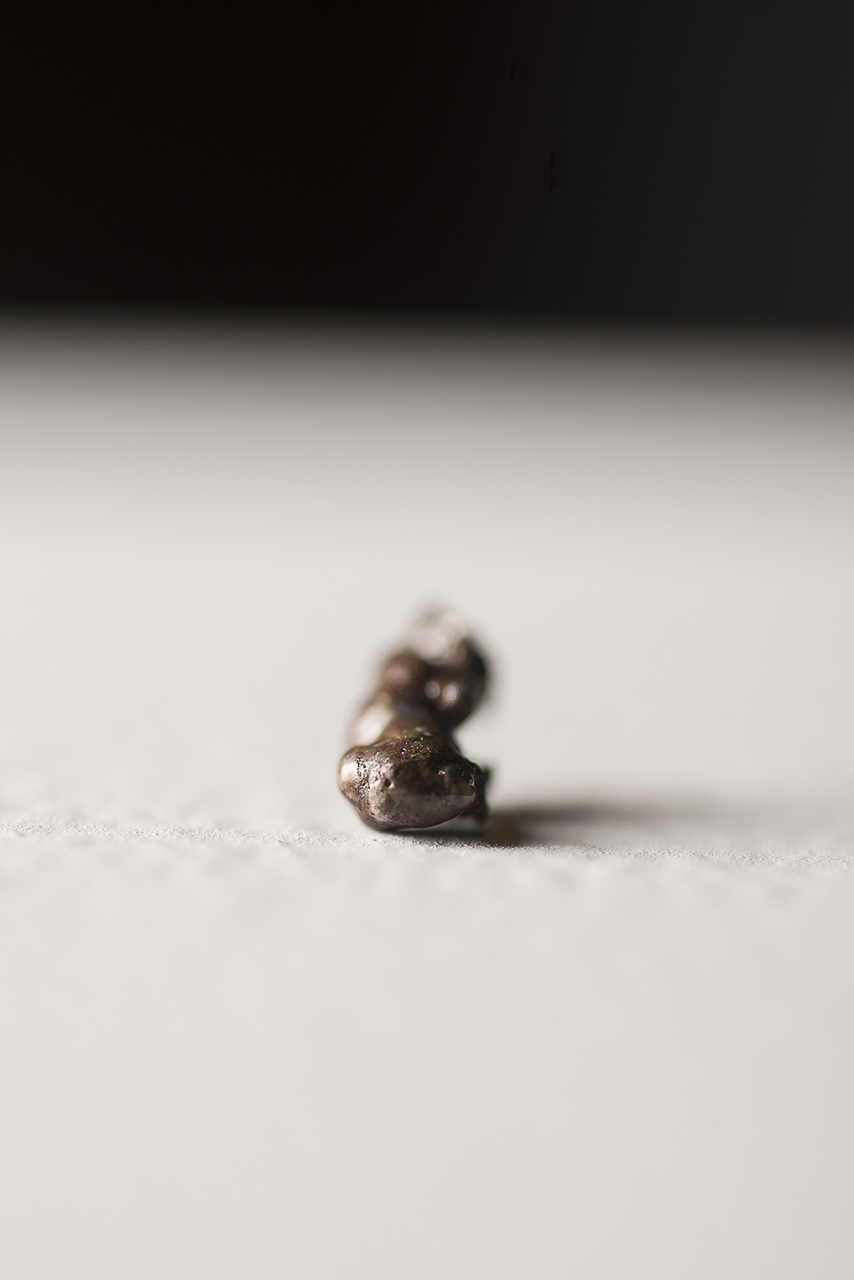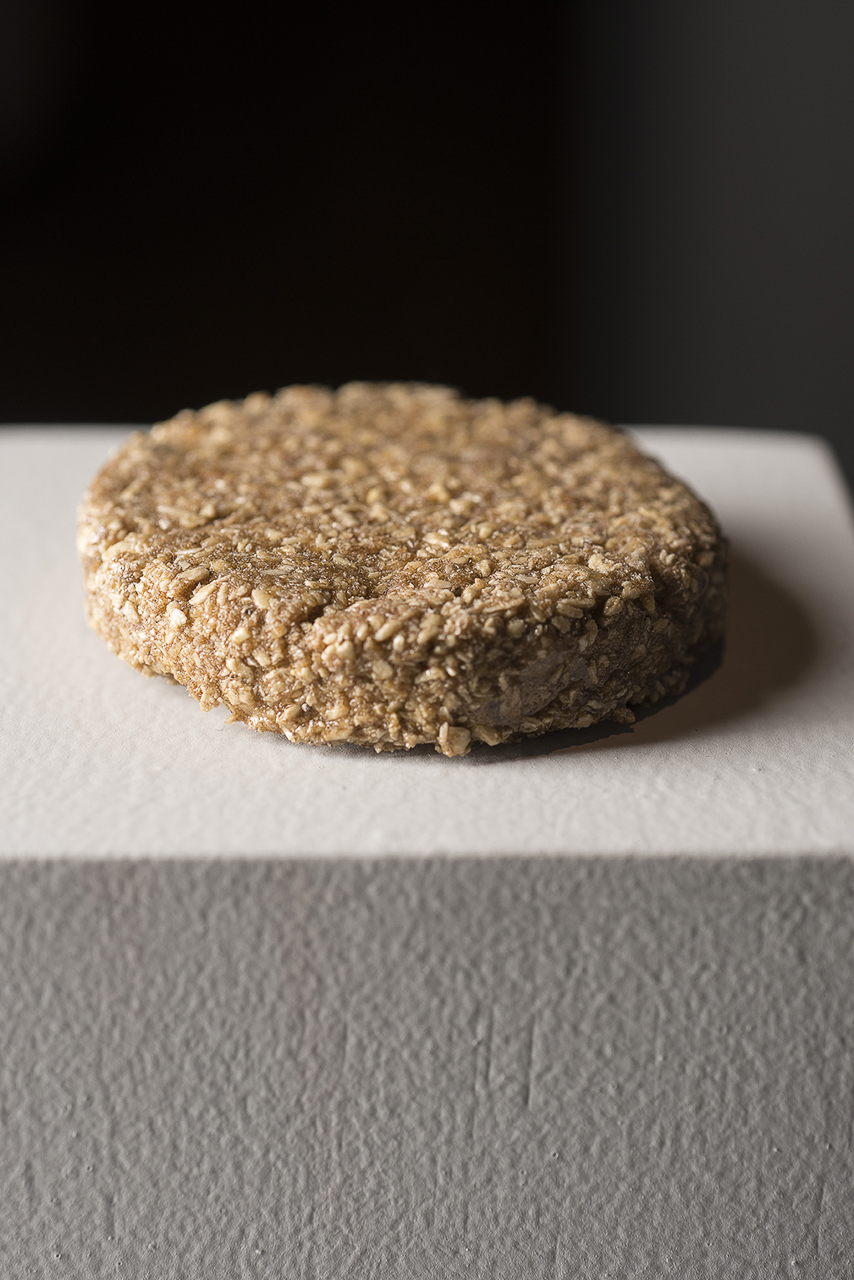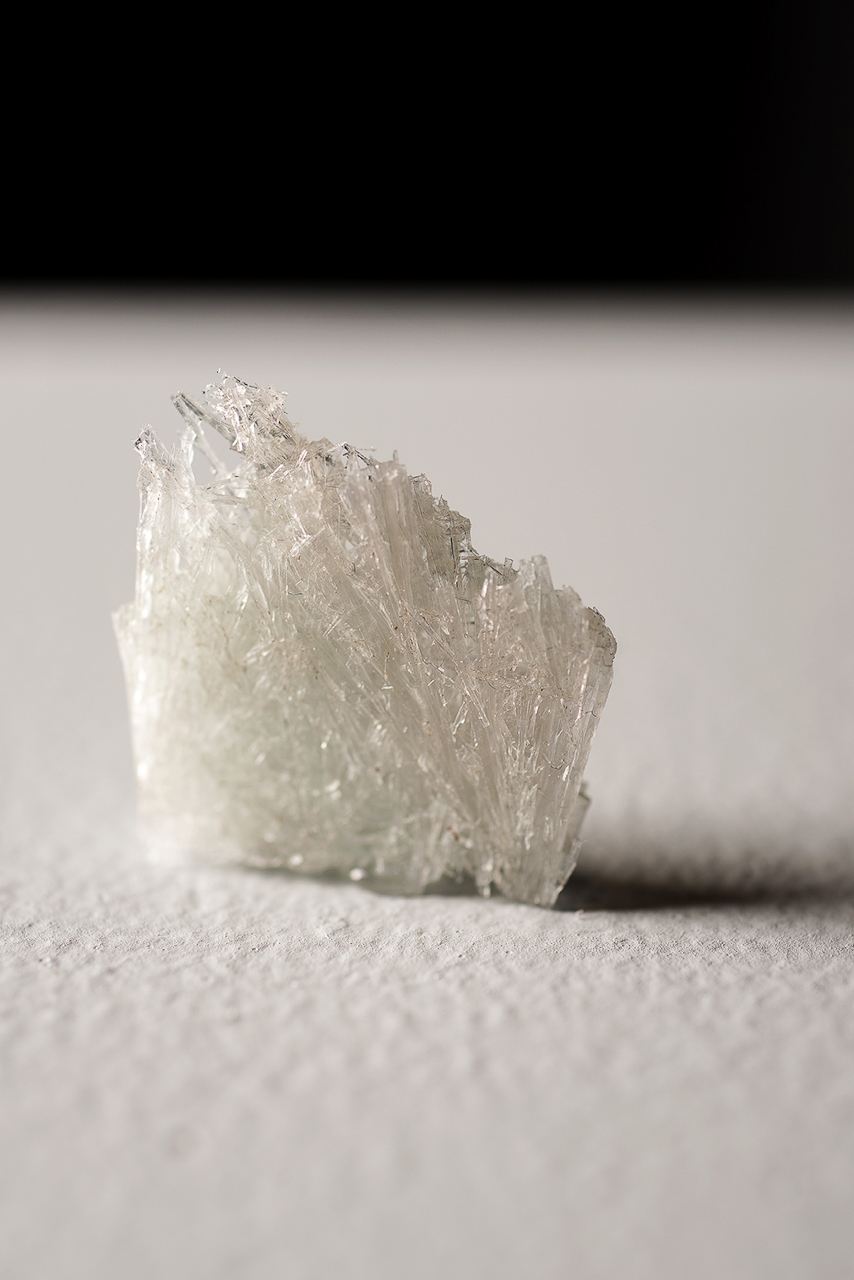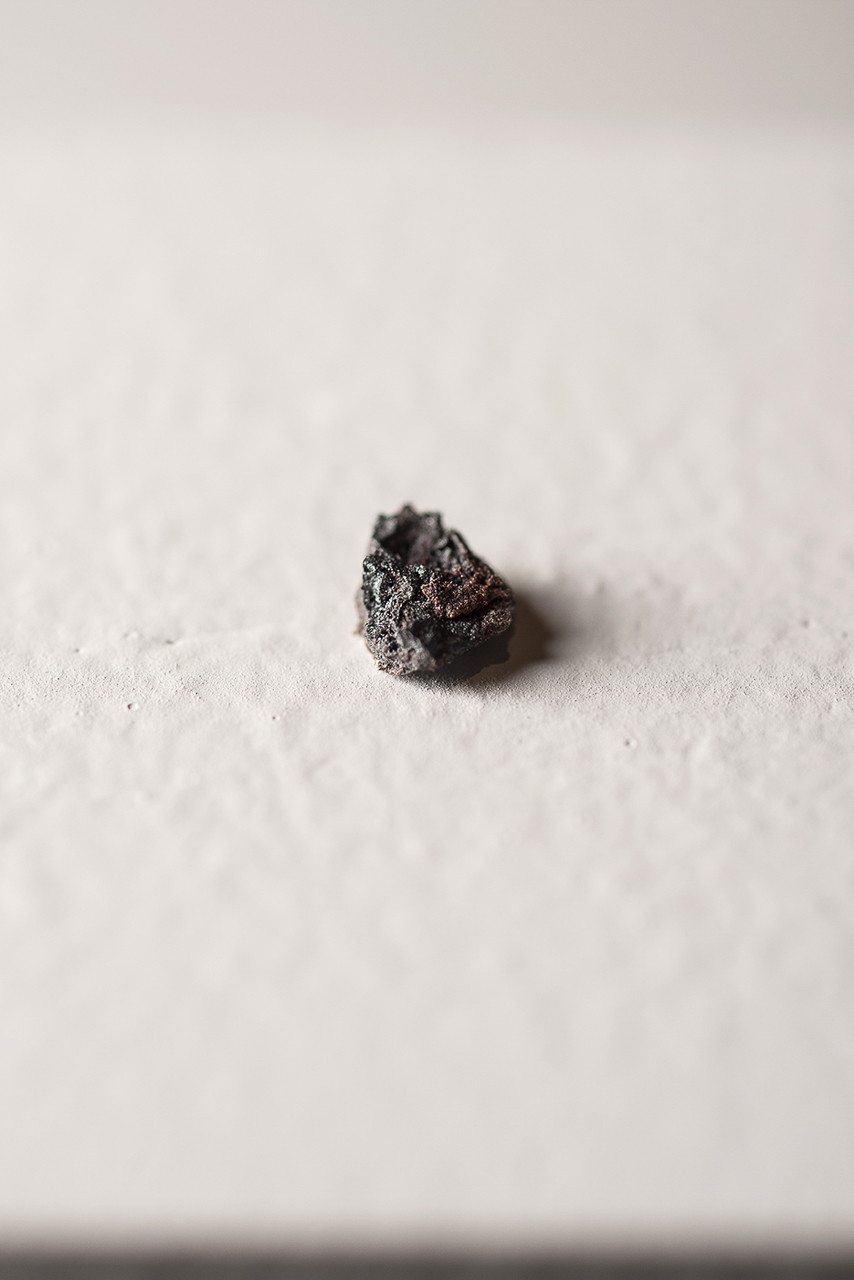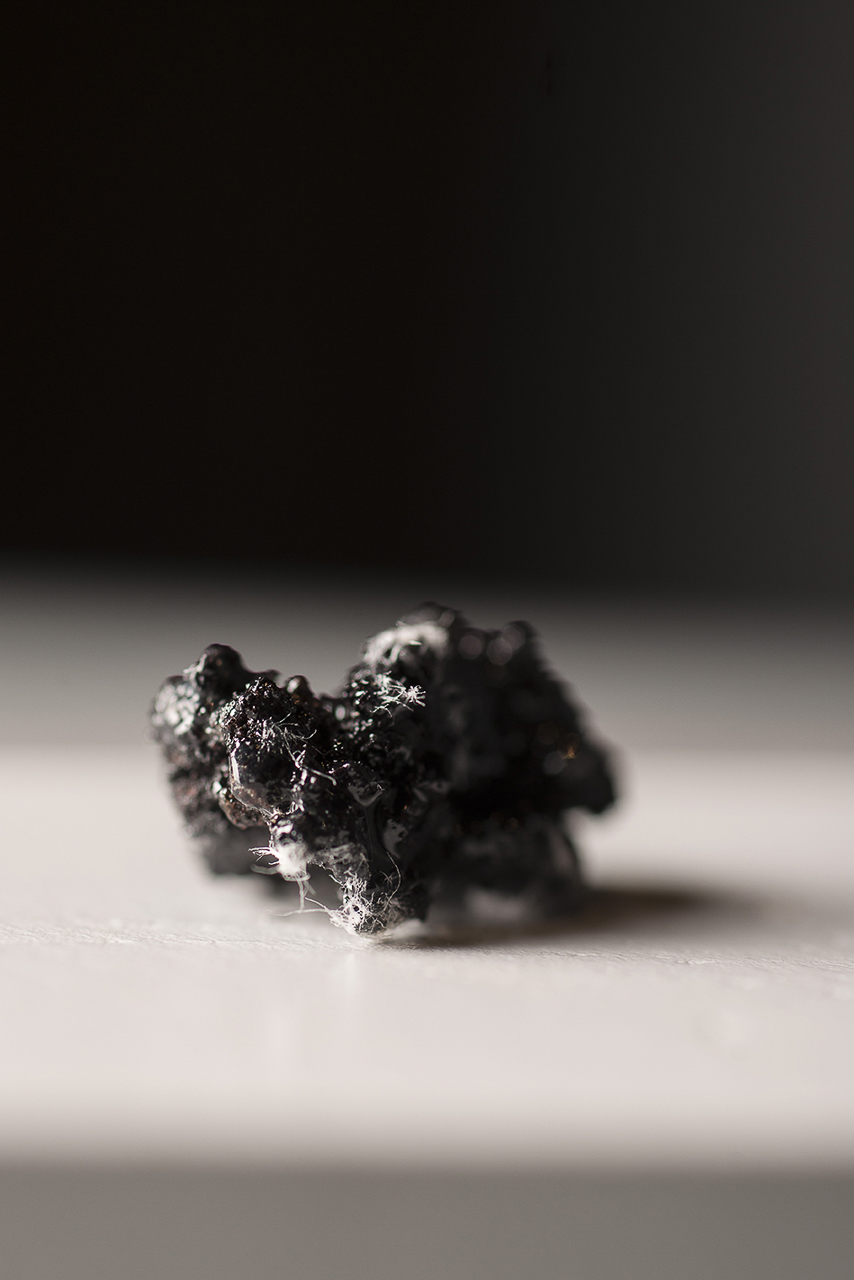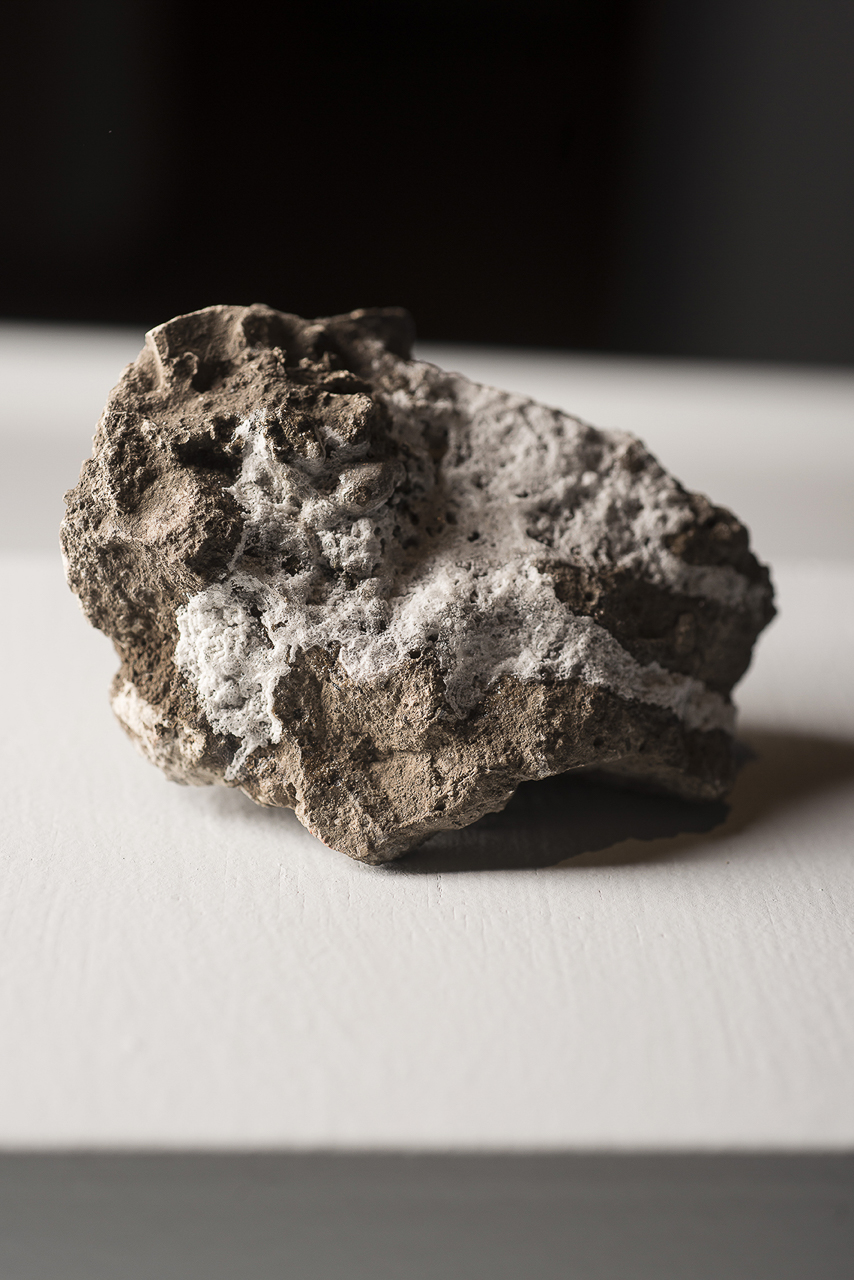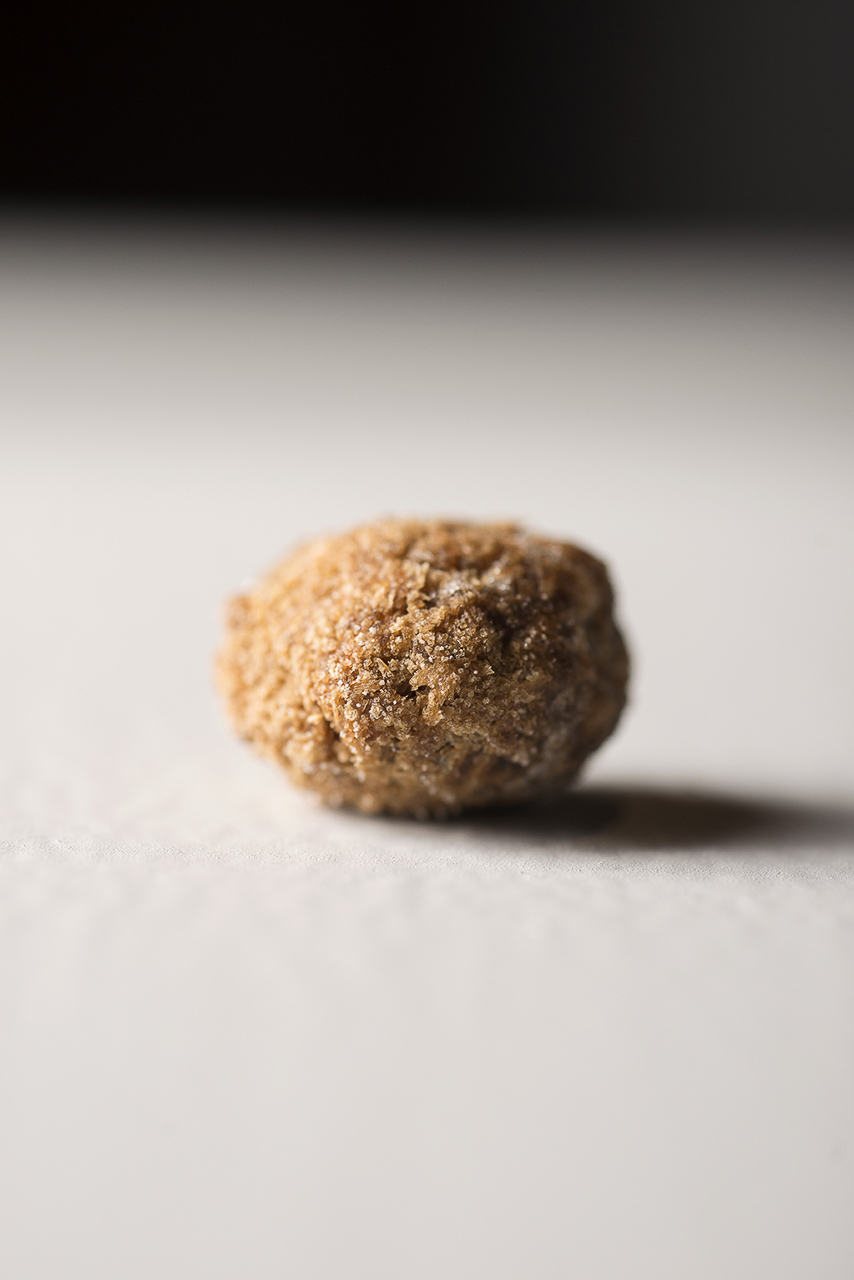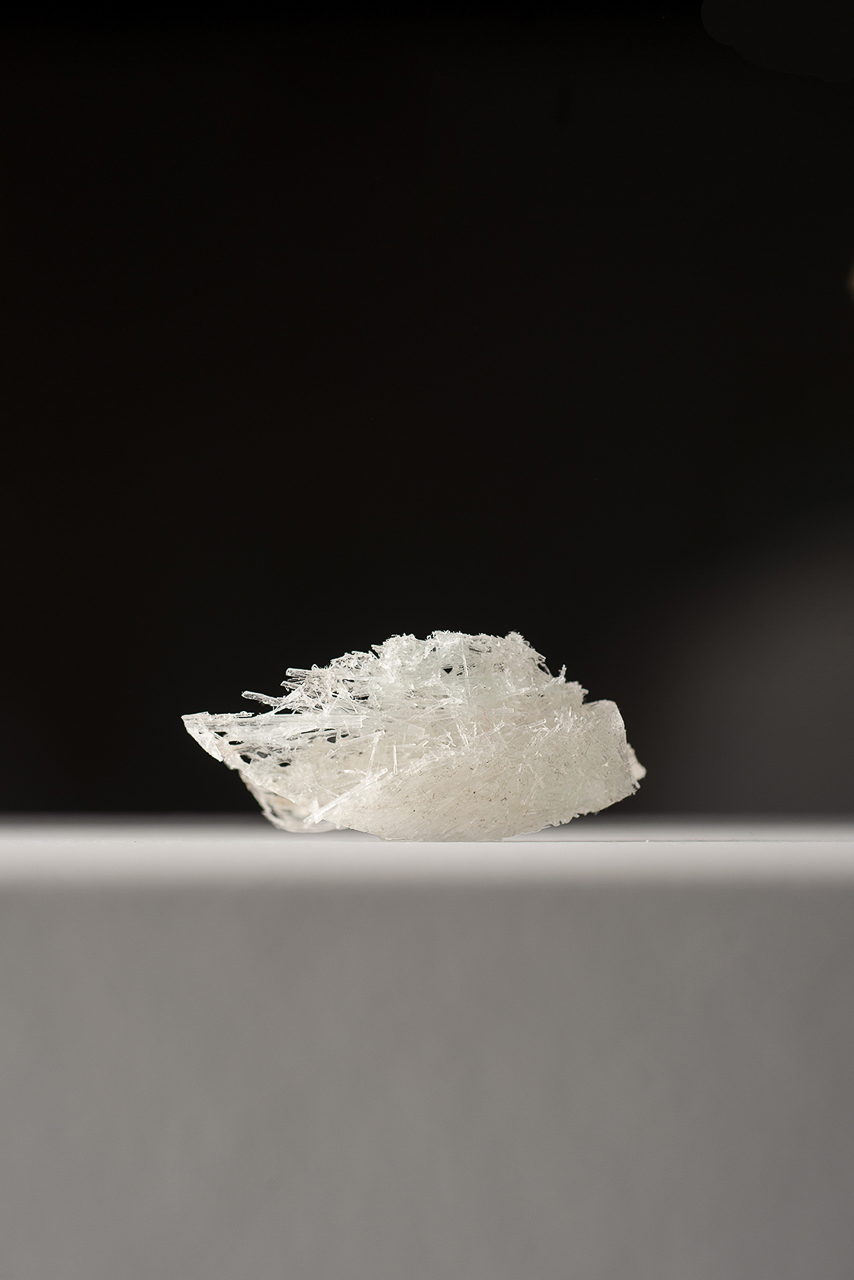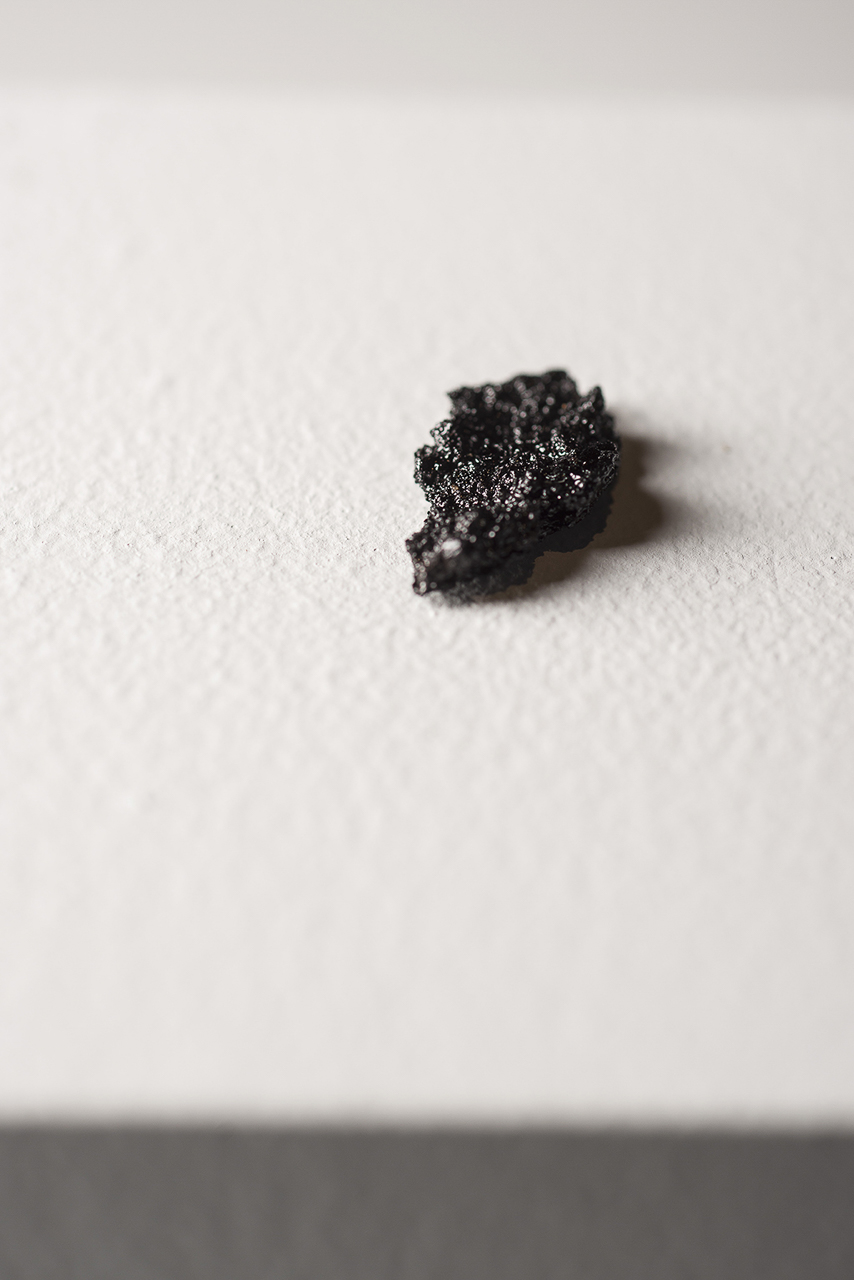synthesis
Synthesis is a series of sculptures that construct an intimate yet universal portrait of the human body. Departing from conventional ideas of representation, the project approaches portraiture as a philosophical and material inquiry into the body’s elemental structure. Conceived in close collaboration with a physician and a chemist, these works examine the internal “architecture” of the body—not to replicate its appearance, but to transmute biological presence into geological form.
Each sculpture is composed of minerals that correspond to the elemental composition of the human organism—carbon, nitrogen, calcium, potassium, sulfur, sodium, magnesium, among others. The precise quantity of each substance mirrors its average proportion within the body, resulting in pieces that are not symbolic metaphors, but actual material equivalents—elemental portraits rendered in matter itself.
In Synthesis, Rasgado bypasses the surface of portraiture to engage with its deepest strata: substance over semblance, mineral over mimicry. Merging scientific precision with poetic abstraction, the series proposes a body not as image, but as a resonance chamber between the organic and the inorganic, the intimate and the planetary.
What emerges is a radical rethinking of the human—no longer a bounded form, but a porous threshold where biology and landscape, self and sediment, coexist in a continuous exchange. Through this displacement from figure to strata, Synthesis invites us to imagine the body not as a closed system, but as a site of transformation, inscription, and cosmological entanglement.
Materials
Carbon, Nitrogen, Calcium, Phosphorus, Potassium, Sulfur, Sodium, Chlorine, Magnesium, Iron, Fluorine, Zinc, Silicon, Rubidium, Strontium, Bromine, Lead, Copper, Aluminium, Cadmium, Cerium, Barium, Tin, Iodine, Titanium, Boron, Selenium, Nickel, Chromium, Manganese, Arsenic, Lithium, Mercury, Caesium, Molybdenum, Germanium, Cobalt, Antimony, Silver, Niobium, Zirconium, Lanthanum, Tellurium, Gallium, Yttrium, Bismuth, Thallium, Indium, Gold, Scandium, Tantalum, Vanadium, Thorium, Samarium, Radium,Tungsten, Beryllium.
date
2016-2021
Exhibitions
⎖Horizon, Steve Turner La
⎖XIII Bienal de Cuenca
⎖Power of ten, Steve turner LA
Collaborators
⎖Dan Cameron, curator
⎖Dr. Daniela Franco, advisor
⎖Dr. Fernando Muñoz, advisor
⎖Ing. Rodrigo Gutiérrez Navarro, advisor
⎖Pollock-Krasner foundation grant
⎖Young Creator Grant, FONCA
Texts
⎖Dan Cameron
publications
⎖xiii Bienal de cuenca Catalogue, Ed. Bienal ed cuenca
⎖Ghost Pavillon, ed.by Ediciones popolet
⎖أفق / Horizonte /Horizon ed. op.cit. and Sexto Piso
Texts
Published in:
⎖Impermanence/Impermanencia XIII cuenca biennial catalogue, ed. by Bienal de Cuenca
Rasgado’s Synthesis project, which was developed for the XIII Bienal de Cuenca, specifies the Museo Pumapongo as its location, partly because of the archaeological interest, and because of the artist’s desire to present an artwork that falls at an intermediary point between science, anthropology, and art. The artwork actually exists in two parts: a series of small sculptures composed of crystallized substances extracted from the human body, and an installation-based work that considers human existence relative to the stars. In the first, “Synthetis,” Rasgado has effectively reduced the extracted substances –blood, saliva, bile, urine and bone– to their primary mineral state, or the one in which they most resemble geological deposits, thereby inching the artistic discipline of portraiture closer to molecular science and archaeology. The second part of Rasgado’s installation, titled “Fast Forward,” operates as a way of demonstrating how human time relates to geological time, by presenting us with a fragmentary image of how the earth revolving on its axis, might look in an accelerated way if gazed at from the interior of the Museo Pumapungo.
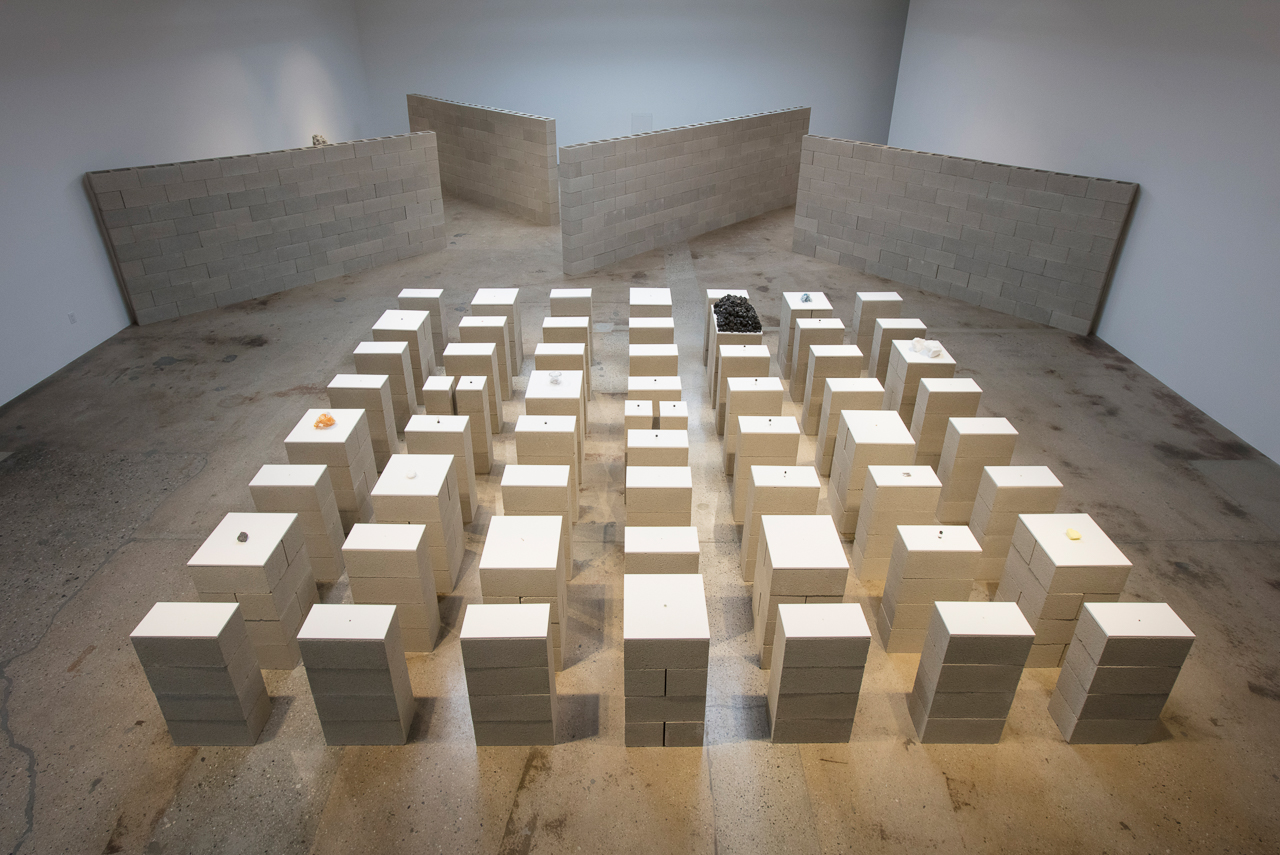
Pablo Rasgado, Horizon, 2016. Installation view, Steve Turner LA.
HORIZON
VENUE:
Steve Turner LA
DATE:
2016
no. 01 - no. 2 - no.3 - no. 4 - no. 5
Title
Horizon
DATE:
2016
medium
Carbon, Nitrogen, Calcium, Phosphorus, Potassium, Sulfur, Sodium, Chlorine, Magnesium, Iron, Fluorine, Zinc, Silicon, Rubidium, Strontium, Bromine, Lead, Copper, Aluminium, Cadmium, Cerium, Barium, Tin, Iodine, Titanium, Boron, Selenium, Nickel, Chromium, Manganese, Arsenic, Lithium, Mercury, Caesium, Molybdenum, Germanium, Cobalt, Antimony, Silver, Niobium, Zirconium, Lanthanum, Tellurium, Gallium, Yttrium, Bismuth, Thallium, Indium, Gold, Scandium, Tantalum, Vanadium, Thorium, Samarium, Radium,Tungsten, Beryllium.
The precise amount of each mineral used for the construction of this sculpture, reflects the amount of the related element that exists in an average human body.
In archaeological terms, a horizon is the distinctive type of sediment, artifact, or other cultural trait that is found across a large geographical area. In Horizon, the horizon is both a portrait and a landscape.
These sculptures are the result of a close collaboration with a physician and a chemist, into an analysis of the "architecture" of the human body.
dimensions
Variable measures
Synthesis
VENUE:
Installation view at the “Impermanence”, XIII Cuenca Biennial
CURATED BY:
Dan Cameron
DATE:
2016
no. 06 - no. 7 - no. 08 - no. 09 - no. 10 - no. 11 - no. 12 - no. 13 - no. 14 - no. 15 - no. 16 - no. 17 - no. 18 - no. 19
Title
Synthesis
medium
Crystallized substances extracted from the human body
dimensions
Variable measures
Synthesis
VENUE:
Installation view at the “Impermanence”, XIII Cuenca Biennial
CURATED BY:
Dan Cameron
DATE:
2016
no. 06 - no. 7 - no. 08 - no. 09 - no. 10 - no. 11 - no. 12 - no. 13 - no. 14 - no. 15 - no. 16 - no. 17 - no. 18 - no. 19
Title
Synthesis
DATE:
2016
medium
Crystallized substances extracted from the human body
dimensions
Variable measures
Synthesis (Lorena)
no. 06
Title
Synthesis (Lorena)
DATE:
2016
medium
Iron extracted from blood.
dimensions
1 x 0.6 x 0.5 cm
Bird (gallus gallus domesticus)
DATE:
2016
no. 07
Title
Bird (gallus gallus domesticus)
medium
Calcium, potasium and colagen from bones.
dimensions
6x 6 x 1.5 cm
Synthesis ( Andrés )
DATE:
2016
no. 08
Title
Synthesis (Andrés)
medium
Crystallized urea extracted from urine
dimensions
2.3 x .2.3 x 0.3 cm
Synthesis (DIEGO )
DATE:
2016
no. 09
Title
Synthesis (Diego)
medium
Iron extracted from blood
dimensions
0.4 x 0.3 x 0.15 cm
Synthesis (Tania)
DATE:
2016
no. 10
Title
Synthesis (Tania)
medium
Kidney stones
dimensions
0.5 x 0.7 x 0.4 cm & 0.6 x 0.9 x 0.5 cm
Synthesis (Cristina)
DATE:
2016
no. 11
Title
Synthesis (Cristina)
medium
Solidified blood
dimensions
2,3 x 0,5 x 0,9 cm
Synthesis (Benjamin)
DATE:
2016
no. 12
Title
Synthesis (Benjamin)
medium
Urea extracted from urine, crystallized on rock
dimensions
7.9 x 4 x 6.8 cm.
Synthesis (Alejandra)
DATE:
2016
no. 13
Title
Synthesis (Alejandra)
medium
Solidified saliva
dimensions
1.6 cm in diameter
Synthesis (Adrián)
DATE:
2016
no. 14
Title
Synthesis (Adrián)
medium
Urea extracted from urine
dimensions
1,7 x 1,1 x 0,9 cm
Synthesis (Ernesto)
DATE:
2016
no. 15
Title
Synthesis (Ernesto)
medium
Solidified blood
dimensions
1,7 x 1,1 x 0,9 cm
projects
